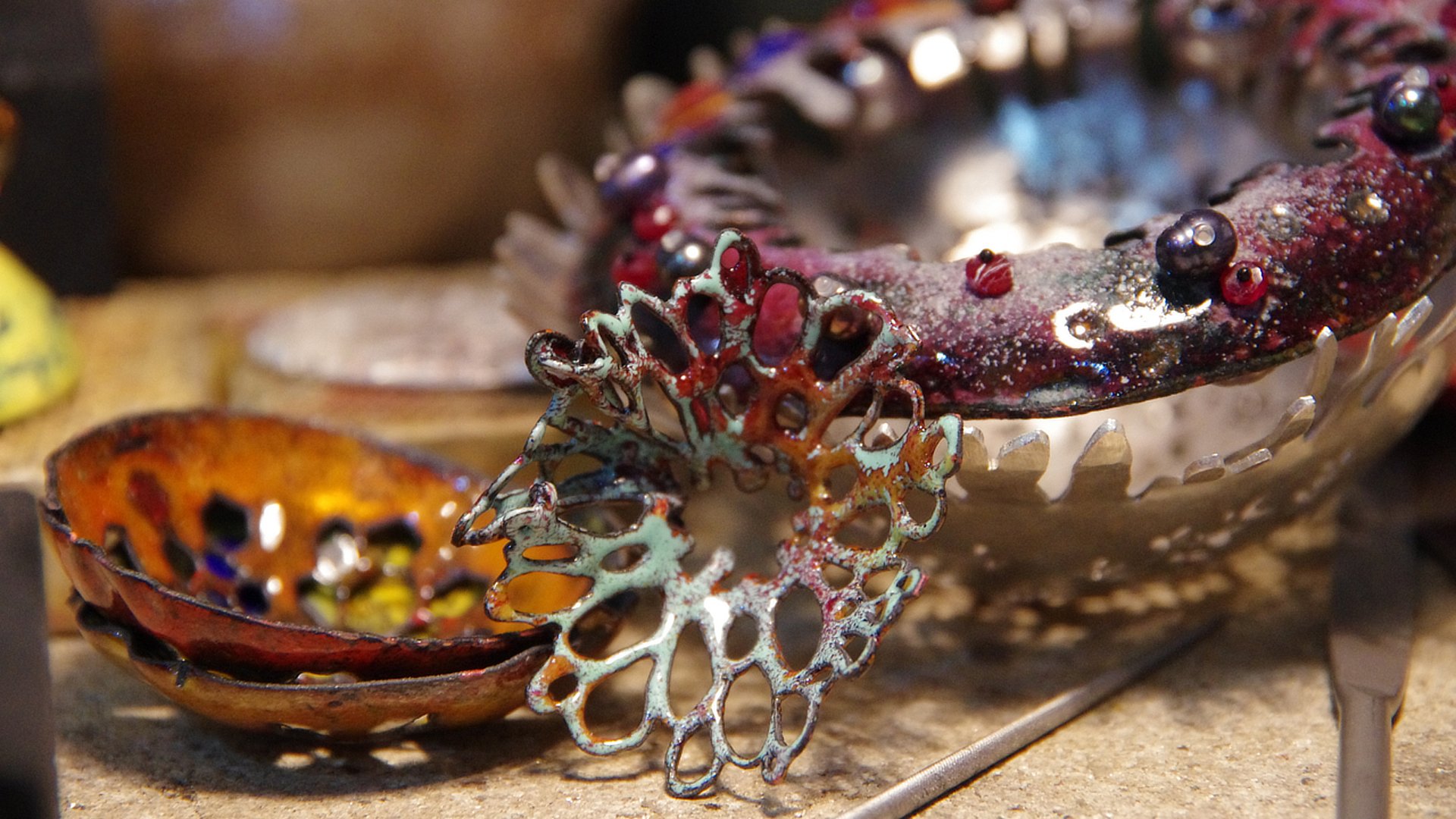
blog
Welcome to my blog. This is a place where I think out loud, show you what I’m up to in the studio, share impressions of inspiring events or everyday moments that moved me. Some entries are carefully curated essays, others are just a few thoughts, sometimes written in English and sometimes in German.
Featured posts

newest blog entries:
SÜDAFRIKA: VON FELSEN, (WARTE)SCHLANGEN UND VERBORGENEN WELTEN
Eindrücke unserer Reise in mein Heimatland Südafrika.
SÜDAFRIKAREISE
VON FELSEN, (WARTE)SCHLANGEN UND VERBORGENEN WELTEN.
Auf Deutsch.
Wieder in Bamberg ist der Himmel weißgrau und wetterlos – kein Regen, keine Sonne, kein Schnee, keine Bamberger Schäfchenwolken. Nur ein weißes, stilles Nichts, eigentlich perfekt zum Ankommen und Verarbeiten der Reiseeindrücke.
Zum ersten Mal waren Alvaro und ich also gemeinsam in meinem Heimatland Südafrika, und so sehe ich viele Eindrücke wie mit einer Doppelbrille gleichzeitig ganz neu zum ersten Mal, aber auch als Normalität, als eine Erinnerung an mein früheres Leben dort. Südafrika ist ein Land von beeindruckenden Kontrasten, ein Land der unterschiedlichsten Wirklichkeiten. Unzählige gelebte Schicksale verweben sich zu einem dicken Zopf aus Weltgeschehen, dessen unterschiedliche Stränge doch eigenen Gesetzen und widersprüchlichen Logiken folgen, und dazu so unterschiedliche Selbstverständnisse in sich tragen.
Ein Teil meiner Familiengeschichte flicht sich hier im 19. Jahrhundert ins Geschehen, als ein Schwede nach Südafrika auswandert und dort eine Familie gründet. Wir besuchen meine Großeltern auf ihrem kleinen Weingut, das in den Hügeln um Stellenbosch liegt, zwischen der letzten Düne des Meeres und den ersten Granitbrocken der nahen Berge. Wir besuchen meine Mutter, die Haus und Garten in ein schattiges Refugium verwandelt hat. Wir besteigen den Tafelberg, wandern, fahren ans Meer, besuchen Freunde, streifen durch die Landschaft, sammeln bruchstückhafte Eindrücke. Davon teile ich einige Fragmente.
Der Cabernet Sauvignon meiner Großeltern; die Reben sind so alt wie ich.
Das alte Farm-Wohnhaus im kap-holländischen Stil, fast versteckt im dicht gewachsenen Garten mit Feigen, Palmen, Hibiskus.
Mandelernte. Das kapländische Klima eignet sich bestens für Mandeln, die im Januar aus der grünen Außenschale platzen und dann geerntet werden können. Im großzügig angelegte Obstgarten meiner Großeltern gibt es fast in jeder Jahreszeit Arbeit.
Die steile, von Felsbrocken übersähte Skeleton Gorge ist eigentlich ein Flussbett, in dem einer der vielen Wege nach oben führt.
Auf dem Tafelberg sind ganze Welten in Felsschluchten und Hochplateaus verborgen. An einem sonnigen aber zum Glück etwas windigen Tag führt mein Bruder uns einen Lieblingsweg hinauf. Wir klettern durch die felsige und dicht bewaldete Skeleton Gorge immer höher, und unter uns breitet sich die Millionenstadt endlos und glitzernd aus. Noch höher, und wir sehen das Meer, den großen Bogen der False Bay und die violetten Bergketten dahinter, die das Kap vom Landesinneren trennen. Oben auf der zerklüfteten Ebene des Tafelbergs gibt es zahlreiche Wege, die sich durch die atemberaubende Fynbos-Welt schlängeln. Fynbos gibt es nur hier im Westkap: eine heimische Mischung aus Proteengewächsen, Gräsern, zarten Kräutern und Blumengewächsen, die teilweise so speziell an ihren Lebensraum angepasst sind, dass sie nur in einem winzigen Gebiet überhaupt vorkommen. Wie etwa der Silberbaum Leucadendron argenteum, ein Proteengewächs mit mysteriös schimmernden Samtblättern, das allein an den schattigen Hängen des Tafelbergs wächst, nirgends sonst.
Wir picknicken in einer schmalen Schlucht, mitten in einem Flüsschen, eingebettet in Farne und von knorrige Stämmen beschattet, deren Wurzeln sich auf unverständliche Art und Weise im Gestein verkeilt haben. Das Wasser ist kühl und rein, aber bräunlich wie Tee, und ich schöpfe gierig davon mit hohlen Händen.
Jede Windung im Weg zeigt eine ganz neue Welt, ein neues Mikroklima, eine eigene Mischung aus Sonne, Wind, und Wasser, die jedem Berghang und jeder Schlucht ein individuelles Kleid schneidert. Als Wanderin fühle ich mich klein und unwissend neben den Felsgiganten; was verstehe ich schon von den geheimen Zusammenhängen dieser uralten Welt? Wie wenig durchblickt man beim Durchstreifen dieser Landschaft, man sieht doch bloß das Alleroberflächigste.
Ein Blick zurück in die soeben hinaufgekletterte Schlucht und über die Cape Flats.
Ein schmales Plateau, übersäht von leuchtend lachsfarbenen Watsonien, deren Zwiebelknollen eine Lieblingsspeise der kapländischen Stachelschweine sind.
An einem Flüsschen, das fast die Farbe des heimischen Rooibostees hat, wird Rast gemacht.
Ein alter Baum, verankert im Fels, mit knubbelig-flauschigen Moosinseln bewachsen.
Sogar Wasserreservoirs gibt es oben auf dem Tafelberg: Anfang des 20. Jahrhunderts wurden hier mehrere Dämme gebaut, um Trinkwasser für die Stadt am Fuß des Berges zu speichern.
Im starken Kontrast dazu steht der Besuch bei Home Affairs, dem Bürgeramt. Denn mein Pass muss erneuert werden. Bereits in Deutschland war ich wiederholt in München beim Südafrikanischen Generalkonsulat zur Verlängerung meines Reisepasses. Das Vorhaben scheiterte an meinen durch die Goldschmiedearbeit abgeschliffenen Fingerkuppen der linken Hand, die im altmodischen Stempelkissen nur mangelhafte Fingerabdrücke hergaben. Bürokratie ist leider in allen Ländern unumgänglich, und so stelle ich mich bei Home Affairs in die Warteschlange, Termine werden nämlich keine vergeben. Stattdessen wartet man in langen Schlangen in der gnadenlosen Sonne; erfahrene Bürokratiegänger kommen mit Campingstuhl, Kreuzworträtsel und Schirm, und einer Tüte voller Geduld. Es gibt sogar professionelle Warter, die sich frühmorgens in die Schlange stellen und später ihren Platz gegen einen Geldschein wechseln, meist zu aufgebrachten Protestklängen der hinter ihnen Stehenden. Jedenfalls fand mein stilles Drama nach vier Gängen zum Amt ein Ende, als ich endlich, nach fast acht Monaten vergeblicher Versuche, mein kostbares Reisedokument in Händen hielt und damit wieder heim nach Bamberg durfte.
Wer klug ist, fährt in entlegene Städtchen ins Bürgeramt, um die sich die allerlängsten Wartezeiten zu sparen, aber selbst hier warten schon mehr Menschen als an diesem Tag drankommen werden (die Schlange führt hinter dem Gebäude um die Ecke).
Auf einem Flohmarktbesuch gehen uns die Augen über: So unendlich viele gelebte Leben, deren Überbleibsel hier auf geblichenen Plastikplanen ausgebreitet angeboten werden, so viele Geschichten, zu viele, sie überhaupt alle wahrzunehmen, geschweige denn einzufangen.
Flohmarktgetummel.
Wir beobachten wie eine Frau um einen Föhn feilscht und diesen dann nach erfolgreichem Kauf zusammen mit ihren anderen Einkäufen davonträgt.
Alvaro, immer auf der Suche nach alten Werkzeugen und anderen Schätzen.
Am Meer in der Nähe von Hermanus verliere ich mich in den kleinen Tümpeln, die nur bei Ebbe zwischen den zerklüfteten Felsen zu erreichen sind, nur nach mühsamen Kletterpartien auf den scharfkantigen Steinformation. Die kleinen Mikrokosmen der Gezeiten sind wie umfriedete Paradiese.
Wir besuchen Freunde in Hermanus, wo geheimen Welten in der zerklüfteten Felsenküste die Fantasie beflügeln. An manchen Tagen tummeln sich hier auch Wilderer, die illegal nach Abalone tauchen um diese Delikatesse auf dem florierenden Schwarzmarkt zu verkaufen.
Ich finde Kompositionen aus moosigem Grün und zartem violett, hell-orangene Flecken, kostbare Stückchen Welt die ein Gewimmel von Leben beherbergen. Ich kann sie weder besitzen noch einfangen, denn die Wasseroberfläche schäumt und spiegelt und meine Kamera versagt kläglich. Vielleicht mit Aquarell und Papier, denke ich, auf dem spitzen Fels balanciert, aber vielleicht auch einfach nicht; vielleicht muss man dieses schimmernde Bild allein in der Erinnerung aufbewahren. Manche Tümpel sind dicht mit Seeanemonen besiedelt, in anderen gibt es wieder keine einzige Anemone und dafür eine Menge farbenfroher Seeigel. Und Seesterne, Muscheln, Flechten und Seetang, kleine Krabben, leere und teilweise wieder neu bewohnte Schalen, Totes und Lebendiges durcheinander. Die Grenze zwischen Tier und Pflanze, Alge und Pilz scheint verwischt, der ganze Tümpel atmet im Rhythmus der Gezeiten und wird zur zusammenhängenden Kreatur.
Hermanus.
Wer hat sich eigentlich schonmal die Unterseite eines Seesterns angeschaut?
Farbenfrohe Seeigel, die verschiedene Muscheln und Steinchen mit ihren feinen Saugärmchen festklammern, vielleicht um sich unter dem Geröll zu verstecken.
Das Licht hier im Süden ist anders, ganz eigen, es fällt nachmittags mit weichem Märchenschimmer und überzieht alles mit einem Hauch von Gold-Blau.
Die Farben schillern verheißungsvoll und sind doch beinahe unmöglich einzufangen. Gesprenkelte Seeanemonen verbergen sich zwischen ebenfalls gesprenkeltem Muschelsand, darüber ein Spiegelbild mit Hut.
Leere Gehäuse und ausgelebte Existenzen.
Die Reise ist zu kurz, all das Gesehene zu begreifen und zu artikulieren, aber es bleibt ein Bodensatz an Eindrücken an der Seele haften. Und die kostbare Erfahrung bleibt, dass jeder seine eigene Geschichte mit sich trägt und seine eigene Wirklichkeit lebt. Wenn ich heute auf meinem Sonntagnachmittagsspaziergang die Bamberger in ihre Wintermäntel gehüllt sehe, freue ich mich auf alle anstehenden Begegnungen im Atelier, auf alle die Schicksalswendungen, die mir im Laufe des Jahres zugetragen und erzählt werden, und die ich dann anschließend als kostbare Erinnerung in Schmuckstücke konservieren kann. Denn das ist mein Leben so wie ich es mir erträumt habe - im Fertigen der Schmuckstücke tragbare Geschichten erzählen.
Zu Besuch auf dem eindrucksvollen Weingut Babylonstoren, dessen aufwendig gestaltete Gemüsegärten alle Gartenliebhaber träumen lässen.
An Attempt at the Autumnal Garden
The spectacle of autumn is overwhelming in its urgency and intensity, pushing me to sculpt words around experiences - although I know how every attempt to render that deep, tearing honey-sweet pain of autumn into text will always feel insufficient.
An Attempt at the Autumnal Garden
Musings and meanderings concerning autumn.
Written in English.
Snapshot of a shrivelled rose along my path.
The spectacle of autumn is overwhelming in its urgency and intensity, pushing me to sculpt words around experiences - although I know how every attempt to render that deep, tearing honey-sweet pain of autumn into text will always feel insufficient.
For a while, I have felt mute; busy, perhaps too overwhelmed with all the bits and pieces of my everyday life to really manage deep-thinking-writing time. But now, with the beauty and brevity of these golden weeks so palpable, I feel I have no choice but to carve out a few hours to think on paper.
My work centres around in the inner Garden (which I think of in capital letters), embedded in humanity’s collective being, and around all the metaphors attached to this image, such as the idea of paradise. Autumn means death in the Garden. And it is a conscious, flamboyant kind of death.
Every year, I’m swept off my feet by the emotional force of it all, the luminosity of the colours, the shrivelling rose hips and un-picked blackberries, the darkening edges around leaves, the slow creeping of yellows into greens, and oranges into yellows, the evening cold, the sunset pinks, the slanted light, the confused crocus I discovered on a walk, the wild apples and walnuts crowding the riverbank.
It’s harvesting time. Time to collect, time to roam the fields, to follow those small winding paths along the river to look, look, look at the world, observe nature with your entire being; time to absorb the colours and store them deep in your soul for later.
It is also a time for a strange kind of pain, a time for a conscious contemplation of death. Every exquisite yellow leaf is a slither of lived life, a slice of death; it will be decaying soon, magically broken down into its components by fungi, bacteria and other precious agents of change. But it will also be a leaf-shaped space for something new in this world, next year, in the next cycle. It will be transmuted, made into nutrients for other life forms. It is given freely.
We humans are astonishing creatures. I believe that we have the unique ability to hold paradoxes in our mind, and this balance of seemingly irreconcilable opposites is exactly that place where our humanity flourishes. It’s that moment of inner freedom, where we are detached enough not to succumb to self-pity and emotional enough to feel real empathy, where we hold birth and death, joy and sorrow in one and the same space, with grace and dignity and (self-)love. This is my ambition for these upcoming weeks: practising to hold that difficulty within myself, being a witness, becoming really comfortable with paradoxes.
Here, in this moment of joyful pain, and melancholy gratitude, I think there is a grand lesson to be learned from nature. The search for a good life is closely tangled into the search for a good death. Death looming, invisibly and inevitably, is the most life-affirming impulse there is. It transmits the urgency of living in imperatives: Do! Make! Craft! Love! Fall! Build! Dream! Cry! Bleed! Share! And if I may, when my time comes, face my own death with the graceful surrender of the Autumnal Garden, it would be a good death.
Below are the manifestations of my wanderings and wonderings in the fields and forests around my (still-new) hometown of Bamberg, observing the close-knit fabric of nature, watching the wildflower calendar carousel through the seasons, and the yellowing of the forest, the migration of birds. By collecting, composing and creating, I attempt to channel my emotions into this visual Garden.
Above:
SPATTER: DEEP FOREST, available here. Enamelled statement earrings housed in a watercolour painting. With my overgrown forest landscapes I'm creating a dense, imaginary jungle of shapes and colours and symbols that draw the viewer into its thicket. It's all about the complex garden we carry within ourselves, the ambivalence of our souls - cultivated and wild, dangerous and gentle, a space that is hazardous and safe at times, both present in the now and eternal, both human and divine.
Detail of SPATTER: DEEP FOREST; see the entire art work above.
UNDERGROWTH, an impression of a walk by the river. Watercolour, ink & beeswax painting - available here.
This is harvesting time. Finding patterns, colours.
Still clinging, surrounded by siblings.
BOTANIST’S HALF-DREAM JUST BEFORE DAWN, available here in my online-shop or at the studio in Bamberg.
Statement neckpiece. Carefully kiln-enamelled disks, concave side in a variety of mottled dreamy greens and autumn colours and convex side a deep burgundy red.
Autumn will forever stay the most inspirational season to me. The colours flood me, dominate my mood. I feel as if I'm walking on mottled gold, eating slices of autumn, breathing wild-grapevine-purples and falling asleep into a sea of oranges at night. Colour buoys me up, and seeps out of me into my work.
GREEN LEAFEATERS. Bright statement earrings.
My LeafEater series is inspired by the intricate patterns on leaves left ravaged by hungry insects. As I paid closer attention, I noticed how different plants attract different predators, and how they each have their unique patterns. Like most humans, leaves are comparable, but never ever actually the same. In an attempt to get to know one leaf intimately, I play with these patterns, subtle colours, jagged edges, and lace-like cutouts. Each leaf is hand-sawn and kiln-enamelled.
Above:
SAFFRON POMEGRANATE, available here. Pendant showing off the marvels of enamelling as a contemporary jewellery technique.
These abstracted pomegranates are vibrant fruit stolen from an imagined paradise, a garden of dream-like spaces and lost mythological treasures. Wear them to carry a small token of Persephone, the goddess of springtime, vibrant botanicals and the dark underworld.
HEDERA, statement earrings. Enamel on silver, silver hook, faceted pink garnet drops.
A CONSCIOUS GARDEN, being assembled on my jewellery bench.
Dog roses, mummified memories of last summer.
My Otherbirthday
To say that those initial six months changed me is a gross understatement. The experience distilled my life in an instant, it filtered out a lot of bullshit. It is the single best thing that has ever happened to me in my life so far.
I think for my tenth anniversary it’s worth delving into the details of what this experience brought to life, got rid of, and how it has shaped my life for the better. Here are some of the thoughts I became aware of, as I dug deeper, and some of the learnings I took from it.
My Otherbirthday
Today I am celebrating my tenth otherbirthday. A day that’s been a silent private celebration up to now. It’s probably more important than my conception or my actual birthday, when I came into being, because out of this experience I am beginning to extract my purpose.
Written in English.
Today I am celebrating my tenth otherbirthday. A day that’s been a silent private celebration up to now. It’s probably more important than my conception or my actual birthday, when I came into being, because out of this experience I am beginning to extract my purpose. Despite its significance, I have never written about my otherbirthday in much detail publicly.
To be honest, I never had the right words to write about it. I’m not sure I have them now, but the time feels appropriate to share something so personal. We don’t only need to allow more emotion into our worlds, we need to learn to hold our emotions, those of others, to open up, and allow ourselves to be changed and weathered by our circumstances. To me, those who have lost their ability to be moved in life are somehow calcified by bitterness and disappointment, and need a good rinse of joy, like my coffee machine every couple of months.
On this day, ten years ago, I woke up in an ICU ward with no less than seven tubes stuck in my body. As I slowly drifted into consciousness, I became aware that I was incredibly thirsty; there was nothing but thirst, my world was thirst, the scratchiest sand-paper deepest desert thirst you can imagine, but I couldn’t make a single sound to cry out for water because there was a tube stuck down my throat as well.
I was edging back into a kind of awareness of my surroundings, although my vision was blurry with morphine. Ever so slowly, fragments of memory returned. I was waking up from an eight hour shoulder surgery, where an expert team of doctors had cut out my entire left shoulder joint and part of my left humerus, along with a sizeable tumour that had been growing there. They had replaced the bone with an artificial titanium shoulder joint. As I learned later, the procedure had been a little more complicated than anticipated (which was difficult enough); three separate lung emboli had forced the doctors to resuscitate me repeatedly, while I was losing grotesque amounts of blood. It must have been a serious eight-hour battle for those doctors to keep me alive, and I’m grateful to have been unconscious.
Before the operation, I had collected blood from seven different friends and family members who happened to share my blood type: Altogether 5,5 litres of that ultimate talisman, that mythical life force which I imagined flooding my body with their will-power, their strength, their tenacity, their complex love for me.
February 2011, the night of my twentieth birthday. A preciously fierce snapshot showing next to one of the kindest and most beautifully brittle souls I know, dear Louis.
About three months before, in November, just days after my last exam marking the end of my first year at university, I had been diagnosed with an aggressive, fast-growing type of bone cancer in my left shoulder joint and upper arm. An invasion of needles, medicines, poisons, facts, fears, fictions, hopes and strange odours followed. The boundaries between “good” and “bad”, and between “mine” and “not mine” dissolved quickly; the chemotherapy was good because it killed those rampant cells mercilessly, but it was also killing other fast-growing cells. “Cytotoxic,” it said on neon yellow stickers on each gelatinous bag dangling from my drip stand. I lost my hair. It didn’t matter. I lost my teen chubbiness, fifteen kilos in two months, which felt fantastic. I lost my appetite for food, my ability to concentrate, to work towards a larger goal. I lived day by day, eternally grateful for the neat slicing of time into mornings and afternoons and evenings, marked by sunrises and sunsets; a light-filled morning offers a new opportunity, every time. Was I fighting a grand fight? Was I fuelled by anger and a sort of combat-energy? Not really, no. It didn’t feel like fighting anything at all, simply because almost everything took an indescribable amount of effort. To concentrate on a book was an effort, to will myself to be interested in the interestingness of life, to watch a movie, to have a meaningful conversation. I was certainly not joy-less in that time, but filling my day with anything at all was exhausting. Everything was an act of rebellion.
It was both a time of intense aloneness, because I was living through experiences I struggled to articulate to others, and also a time of the sincerest and most intimate companionship I had ever experienced. The fragility you inhabit in such a situation allows for the greatest intimacy imaginable. When you allow others to see you in that bare, broken state, that moment of trembling weakness transforms into sheer strength: When you mobilise yourself to get up from your hospital bed for a bathroom trip, drip stand in tow, and two metres across the room transform into an arduous journey, an adventure almost, stretched over long minutes, and you let someone bear witness to that struggle. I remember feeling a new sense of precious connectivity with my mother, coming back and being a child again, being cared for with so much love, after having spread my wings at university for a year.
The operation to remove the by now grape-fruit-sized tumour was scheduled for the 11th of February. A period of convalescence followed, along with a second cluster of three rounds of chemotherapy. Since 2011, I have had another three shoulder surgeries, each improving on the previous model.
To say that those initial six months changed me is a gross understatement. The experience distilled my life in an instant, it filtered out a lot of bullshit.
It is the single best thing that has ever happened to me in my life so far.
I think for my tenth anniversary it’s worth delving into the details of what this experience brought to life, got rid of, and how it has shaped my life for the better. Here are some of the thoughts I became aware of, as I dug deeper, and some of the learnings I took from it:
2011. A snapshot at my mother’s house, one of those peaceful afternoons, about two months post-op.
1. I learned about facing my fear of pain and of death.
I believe our society (at least in predominantly Western cultures) has unlearned dealing with our own deaths well. We don’t speak about it, so the subject becomes unspeakable. We are all the more afraid of it because of its namelessness. Of course, losing someone isn’t made any less emotional if death is no longer euphemized; on the contrary. But one hopes that because the tempestuous force of death is acknowledged, one is perhaps a little better equipped to face the loss of loved ones and eventually one’s own departure.
Facing my own mortality in such a drastic way mostly killed my own fear of death. The idea of losing yourself, losing that conscious thinking inner voice, of dissolving into particles, can be absolutely terrifying. Something shifted there for me which is almost impossible to articulate. It is as if an impending sense of loneliness and lostness crystallized into a feeling of belonging and togetherness, ever so gently, a feeling of being caught, cradled, and embraced by the world, a feeling of porousness where I realize that the boundaries of my conscious self and my body might not be as real as I thought.
In my life now, I don’t evade the idea of dying, and it doesn’t make me uncomfortable anymore. Death, to me, now, will be like going home. It will happen eventually, maybe sooner or maybe later, when this journey has come to its end. And I hope that it will be okay.
For many, the fear of dying is tethered to the fear of pain. We tend to be very, very afraid of pain – with good reason from an evolutionary perspective, and we do all kinds of things to avoid pain. Yet, in my experience, our fear of pain is often much more magnified than the pain itself, once we brace ourselves.
There was pain too in my post-operation experience: The kind of incredible, breath-taking pain that really taught me how powerful my mind was, that became so much part of me that I had no idea where my body ended and the pain began. I remember the first night I was truly conscious after my operation, not being able to sleep at all, spending six hours inhaling waves of pain and releasing them out my back, making myself permeable, talking to the pain, being humbled by it and awed, imagining an endless ebb and flow, a sinus wave of pain, and eventually falling into a powerful trance where I was riding these waves triumphantly. I came to conclude that there is nothing more powerful than mastering pain; it removes most fears in life.
Childhood memories, escaping into inner worlds of infinite brightness. Watercolour and ink on paper.
2. I learned how to unearth adolescent shame, and to let it go.
What this experience really did was to eradicate my shame almost completely. To understand this, I had to delve a little deeper, further back into my growing up: My late childhood and early adolescence was profoundly marked by shame – a deep, irrational, shuddering sense of shame. Not even shame about things I did, although behaviour naturally adds another layer, but shame about the way I was. Like I had somehow become this never-good-enough, squishy disgusting thing that wasn’t worth the love and attention of others.
There is no rational explanation of this; it’s just the way I began to feel about myself around the age of 11 well until I was finishing school. I was ashamed of my un-slender body and my looks, I was ashamed of being too clumsy, too greedy, ashamed of any kind of desire I might have, ashamed of being unfashionable and ashamed of my love for fashion at the same time (secretly pouring over women’s magazines), I was ashamed of how little I knew about men and love, and at the same time afraid of being “improper” if I knew more. I was ashamed of bodily things like sneezes or teary emotional breakdowns in violin lessons, which originated from the shame of not having practised enough the week before. If someone complimented me, I would find a way of being ashamed too. It was a vicious spiral trap that sucked me into ever more ridiculous cycles of self-loathing and bouts of triumphant spitefulness. Mostly, I was also ashamed of my shame.
I found solace in literature and my school work, which was interesting and offered countless alternative worlds, and which I could excel at. Above all, I found safety in my scintillating internal world, brought to life with watercolours and inks and paintbrushes, and populated by wild and colourful characters.
After my experience of facing my mortality, my trapped-ness in that sense of shame shattered like a frozen lake bombarded with rocks. It’s difficult to untangle what exactly caused that change, but I believe it brought me to the brink of humanness, a place of utter helplessness and fragility, of inner and outer limits, a place of nakedness that does not stop at your skin level but penetrates even deeper, a place of bodily fluids and tubes in weird places and strange odours that had nothing to do with me, and at the same time, everything to do with me.
The thought of having something foreign growing within me left me in an ambivalent state where I was feeding friend and enemy cells alike with every bite I took, with every ounce of willpower I mustered. The enemy was undiscernible, it was part of me.
I believe you probably have two different options in that situation.
Either you turn on your own body, you make the entirety of it your enemy, you hate yourself, you distance yourself, you feel contaminated or dirty or broken and eventually disassociate from yourself so much that you somehow give up on yourself.
Or, and this was my story, you embrace that badness in your body. Because I was able to believe – miraculously – that none of this was my fault, I was able to learn to tolerate and live with those “evil” cancerous cells. I felt a kind of empathy for my failing immune system and my own limits, my fragility and my humanity, for my breathlessness as I was climbing stairs and for my bouts of nausea. And every bit of creative work I could do became the biggest gift. By extension, I had to embrace my entire other shadow side too. I developed a strange sense of compassion for my younger self, I wanted to go back in time and hug that poor trembling-little-bird-version of my inner self and tell her how strong and beautiful she could become. And, I learned to accept limitations in others too.
I think this attitude has made all the difference – in a much more impactful way than I could have guessed at the time. I’m not suggesting that you think away your cancer. But you have to start somewhere.
2015. A search for colour, for life, for small amulets stolen from then colourful internal paradise. Photograph of my LeafEater jewellery by Lydia Schröder.
3. I learned to search for Eros.
My desire to die well implies a desire for living well too, and this question has caused me to seek out the kind of life and the kind of relationships I want to pursue. Questions and answers around what it means to lead a meaningful life have presented themselves in turn, causing me to think, rethink and revise my life on a regular basis.
Above all, I want my life to be in search of Eros – in its full, all-encompassing original meaning: life energy and vitality in all its facets. I want to feel with all my heart, I want to dance, to fill my world with vivid colour and smiles and tears; I want flowers, I want fantastic food, music, exquisite art, I want beautiful hand-crafted things to surround me, I want books filled with secret yearnings und shadowy fantasies, I want feasts and chocolate and red shoes, I want champagne and lacy underwear. I want to be in Nature and watch her petals unfurl and flourish and decay again with the seasons. I want to see achingly beautiful sunsets on my evening walks, I want to see my paintbrush dip and twirl, I want to watch my enamels melt in glorious mottled patterns. I want to write letters to people and capture a bit of that by-gone preciousness. I want gold, and delicious deep-sea-coloured gemstones and ancient myths in my life. I want to work hard and be tired at the end of my day, I want to sweat, and laugh until my sides hurt.
With my partner, I get to pursue a precious romantic partnership where we both truly own our desire for each other: It’s a multi-faceted bouquet of love, made of stability but also adventure, of caring tenderness and wild passion, of freedom and security, of familiarity and surprise. Sexual desire is stripped of its poisonous shame and self-deprecation that trickled through the cultural cracks of my childhood, stealthily und unnamed, and instead, imbued with a sacred energy. In my ideal world, sex energy is transformed into a life force that becomes fuel for the creative and the magical in us, in me and in the way I live.
My pursuit of the good things in life has lead to a great enthusiasm for flavours and cooking. It’s another type of alchemy. Here, at university, one of the many meals I shared with Nicola Fouché - lover of herbs, maker of exquisite art books, illustrator of stories, painter of emotions and grower of unconditional friendships.
4. I learned about the vital importance of relationships and friendships.
This experience has really taught me the importance of relationships. Of giving, and above all, taking. Taking from others is incredibly difficult for me because somehow, I felt, it implied that I couldn’t do things myself, that I was weak, broken, insufficient, or pitiable. But – inevitably – life has taught me the opposite: The more I was able to open myself, reveal my humanity, and to accept help from others, the deeper our connection would grow. My experience broke down protective barriers and taught me to hold my own emotions and those of others much more gracefully. Still, emotions – and living in and with them – are quite messy, there is no such thing as “handling” them, although I believe we can always learn to experience our emotional lives in a richer, more nuanced way.
I imagine our social selves like vast, glistening networks of possibilities, glued together by gooey emotion synapses, centres of shared experiences that touch us in a deeper, more archetypal way. Simple gestures can open the floodgates of emotional tenderness, strengthening these connections in a way that adds meaning to the existing and the doing we busy ourselves with here on earth.
I remember, shortly after being diagnosed with cancer, having my over-seas uncle on the phone. He asked me if I needed him to fly over to South Africa and sit by my side to hold an umbrella open above my bed to shield me. I find this powerful image of an imaginary protective umbrella so moving, startling almost, that my eyes well up at the thought every time. It’s just a fantasy, just words, but it’s a human connection that touched something deep and therefore eternal.
Since then, I have had the privilege of meeting many wonderful people all over the world, and often, these lessons of learning to show my humanness, of being unembarrassed about my shortcomings, of being unmasked, yet hopefully not brazenly impolite, have served me extremely well. Building relationships well is hard work; it’s never easy, and it’s differently defined for each individual person. But it is something I aspire to and therefore want to prioritise in my life.
2018, in my Berlin studio. For a time, not only my future in general was threatened, but also more specifically my future as a jewellery designer. I had to face the question if and how I could continue working with my hands in such an active, taxing way as is required for jewellery making. What if I survived but had to have my arm amputated? Of course, I questioned my career choice, but then doubled down pursuing it after my convalescence. Photograph by Roberto Ferraz.
5. I learned to fight cynicism and meaninglessness wherever I encounter it (including in myself).
Coming out of such an experience has truly taught me the value of meaning-making. Telling stories about ourselves, our lives, our environments and our fellow humans colours the world and justifies our existence. Telling stories shapes our own futures.
A life stripped bare of meaning and made barren with cynical snarls and nihilistic shoulder shrugs is a poor, pale, fruitless life. Often, people who have trapped themselves in a place devoid of any deeper meaning tend to fall into a type of victimhood, where life happens to them, runs over them, crushes them. Things turn sour. Others are always the lucky ones. Sometimes, the only way to respond to such a dark world is to become caught up in an inner goldrush of egotistical consuming, taking, taking, taking, because none of it will matter anyway afterwards. Other times, a response is to give up on yourself completely and surrender all responsibility. This type of person, often without meaning any harm, can suck the light and laughter and optimism from their environment, until only bitterness, scorn, resentment, complaining and ultimately despair remain. That, to me, is true hell – not death or pain or loss or grief, but the idea of losing the ability to truly live.
I want to strive to oppose this attitude wherever I find it, including in myself on sombre days, and to counter cynicism with a bright and unbridled enthusiasm for life.
The garden is both dark and light. Darkflock, a wearable fragment of that garden hand crafted from blackened sterling silver and freshwater pearls.
6. I learned o stand for the power to create meaning; to flavour life with love, light, compassion, kindness, and a quest for beauty. I learned that gardening is the ultimate metaphor for life.
To be against something is only helpful if you have something else to replace it with. To tear down a structure is a destructive act. It would be much better to grow a garden around it, until the garden has all but swallowed the structure with its winding branches and ever-evolving floral meanderings.
I see myself as a gardener of sorts; a grower of things. This reflects my view of myself and my life as a dynamic and ever-evolving process of becoming, and encompasses my interdisciplinary way of working, weaving together the fields of jewellery making, sculpture, watercolour illustration, drawing, writing and storytelling.
Gardens can be metaphors for identities too, always growing, evolving, spilling over their boundaries. The image of the garden unites the desire to organize and discipline nature – that need for clean borders – with the equally human urge to be unconstrained, free, to break through boundaries.
A garden needs tending, it needs constant attention, love and gentle curation. A garden isn’t killed if individual plants die or are cut back – on the contrary, new plants only have space to grow if old ones give way. A garden is never right or wrong, but it is simultaneously dark and light. It’s both the seen and the unseen – worlds of microbes, tiny insects and vast mycelial networks that escape our notice. In a garden, everything is connected to everything else: It’s a composition of giving and taking, an eternal cycle of birth and death, of new hopes and failed ideas, of losses and grieving and jubilant new arrivals.
Being so acutely aware of how few days I have left to live (exactly 18 253 days if I’m lucky enough to turn eighty), I want to garden my life with an intense purpose, doing it fully and wholly with my entire being, and planting seeds of light, of joy, of surprise, of kindness and of beauty.
2020. A garden is born onto the page.
February 2021. A life awaits.
One Red Flower
Today, on an extended walk meandering through the streets of Friedrichshain in Berlin, I found a neglected, forgotten graveyard - weathered, skew headstones and completely overgrown with tree saplings and ivy. There, probably planted long ago and deciding to thrive now and here, was a bright red tulip. Solitary, blooming for nothing and no-one in particular. Just by herself. Strong and straight and true, doing her tulippy tulip thing quite formidably.
Today, on an extended walk meandering through the streets of Friedrichshain in Berlin, I found a neglected, forgotten graveyard - weathered, skew headstones and completely overgrown with tree saplings and ivy. There, probably planted long ago and deciding to thrive now and here, was a bright red tulip. Solitary, blooming for nothing and no-one in particular. Just by herself. Strong and straight and true, doing her tulippy tulip thing quite formidably.
I want to have this flower’s strength, blooming for itself and itself only, not caring a dime about other flowers being or not being around her, and giving all the more joy to passers-by because of it. Whenever I stray from that path of making art because I truly WANT to make art, I wish that moments like these would push me back to my true inner WHY.
I wish I could give all of you a bright, red flower.
Happy Earth Day!!
Finding Solitary Safe Spaces
I’ve chanced upon another safe space for my treasury. I collect them like other people collect film posters from the nineties or vintage toy cars. As far back as I remember, I’ve always had these safe spaces; as a child, they were small and cave-like, or up on my favourite climbing tree.
A magnolia tree, ancient walls, and a decorative Baroque bell tower.
The stone archways are shady and pleasantly cool after my brisk walk in the sun. They seem to swallow all sound; the outside world is shut out completely except for the cooing of pigeons in the rafters and the call of a bird that might be a hawk high above. I’m breathing the quiet air of a square church courtyard with a perfect row of sturdy rough-stone pillars forming a cloister around a fairly simple garden. A white magnolia tree in full bloom and a statue of Mother Mary balancing on a sickle moon are at its centre.
I’ve chanced upon another safe space for my treasury. I collect them like other people collect film posters from the nineties or vintage toy cars. As far back as I remember, I’ve always had these safe spaces; as a child, they were small and cave-like, or up on my favourite climbing tree. Now they tend to be wider, often on hills or high vantage points. In a world that requires so much of my energy and attention, I need them. These are spaces where I feel confident that I am enough, right now. For my own sanity, to be at peace in my body and in harmony with the world around me, I seek them out and visit them regularly. I can highly recommend this practice to all of you.
This particular courtyard belongs to a small church in Hildesheim, perched on a hill, called St. Mauritius. According to findings from archaeological excavations, it might have been a pre-Christian place of worship before the area was colonized by the Franconian Empire. St. Mauritius’ ancient Romanesque walls, built between 1058 and 1072, were added onto the foundations of an even earlier chapel commissioned by Bishop Godehard, or Gotthard of Hildesheim, in 1024. This very chapel, under the walls of St Mauritius, is the spot where the famous bishop - one of the most significant medieval Catholic saints - chose to die as he felt the end of his life approaching in 1038.
The courtyard at St. Mauritius: a simple garden of box hedges and trees.
All of these historical layers I researched only later, at home. But back in the courtyard, I was struck by a sense of presence and peace and solitude that cocooned me in cold eternal stone, despite my current (future-oriented) insecurities, and rendered my fears ludicrous. I felt invited to linger, to sit, to sit with myself and my fears and my accomplishments and my strangeness and my love and my weaknesses.
What makes a safe space safe? And I mean safe for yourself, not necessarily safe with regards to interacting with others (that’s a whole different story). I spent some time pondering this since that day on the hill at St. Mauritius. Of course, that depends on the country you are in, it depends on your personal needs and preferences, and on your intuition. But here’s what characterizes a safe space for me:
Energy
The most important attribute of a safe space is its energy. Plainly put, it needs to feel right. This is quite difficult to articulate, and if I were a physicist I’d feel confident enough to explain the complex workings of magnetic fields and electric charges to you, how they build up and, most importantly, interact, around all kinds of things made up of particles – which is literally everything around us, including us. But since I’m not, I’m simply going to say that some places have invisible charges, which we can feel and measure but not really grasp or see. I think this is what gives a place a mood, a meditative friendliness or a menacing aura, a sense of being welcomed or not. I feel safe in places with energy fields that embrace me in my imagination, beckon me, invite me to stay and wait and listen to the world.
Solitude
I feel safe in spaces where I can go alone to gather myself as a human and reassemble all the bits that have fallen into disarray. Even though I am a very social being, I recognize that my energy field is different when I am alone. Large groups of people are not conducive to the kind of contemplation you expect to find in a safe space – their energy fields would start interacting with each other, multiplying each other to create a sense of directed (at)tension. This might be wonderful at a musical concert, but less so when I want to be undisturbed.
Silence
This does not mean no sounds at all, it means the right kind of sounds, pleasant and unobtrusive sounds that allow us to listen to our own thoughts. Sounds such as birdsong, distant music, bells clanging, laughter drifting on a breeze. Away from the clutter and bustle and noisy traffic of everyday life, away from profit-hungry business dealings and the clack-clack of high heels on marble and the sound of souls drowning their own guilt and shame in productivity. Perhaps we find sounds pleasant that wake a sense of nostalgia in our depths and remind us of a mythical lost Golden Age, when things were in harmony.
Trees are these magical beings outside of human time, to me.
Agelessness
Quite often, safe spaces have an ageless, eternal feel to me, or at the very least ancient – marked by structures that have been there for generations like a thousand-year-old stone wall, or trees that might have been saplings at the time of the French Revolution (I had a tree measuring phase not too long ago, where I would measure the circumference of particularly large trees I came upon to calculate their age with a species-specific formula[1]). These structures are often something large to lean against, to lean into. Often, I find there is this sense of something so huge and incredibly ancient and unfathomable that I feel awed by it. Put in my spot as a speck in the universe, not meaningless, but just very, very tiny and rather insignificant. There is a sense of continuity, of stone walls having watched people giving birth and dying, loving and aching, over and over and over again. A feeling of solidity and stability in all this dynamic change. And a sense of belonging, despite my insignificance - a sense of owning my place in this long chain of events that is part of a larger web.
Peacefulness
Above the silence and solitude, you need to be able to actually feel safe in a space like this. There needs to be a sense of peacefulness in its truest meaning, a deep knowledge and trust in the world that no-one can come here to harm you. As if a safe space like this is also sacred, to be left clean and unsullied by malicious thoughts, so awe-inspiring that even ill-minded beings sense its sanctity and enter a kind of truce with the world here. I need this space to be so safe enough for me to dig into my own shadows and bare my own faults to myself, a space where I can be vulnerable and weak – and I can only do that if I can let down my guard in a physical sense as well. It’s difficult to find a physical safe space in countries that are collectively traumatized by crime or war.
Rhythm
Lastly, I often find that safe spaces have a kind of meditative rhythm or monotony about them, like a visual pattern of archways in regular intervals, or a sound like ocean waves crashing on rocks, the tugging of the wind at tall trees, an endless horizon, the flickering of a candle flame or open fire. We as humans have an affinity for pattern and rhythm, we like repetition because it creates a sense of harmony. It soothes us.
Ancient stones have a unique capacity to store history inside themselves, like sponges of layered meaning. There is something powerful about a road built by the Romans two millennia ago.
Of course, these traits of what makes a safe space overlap and interweave and influence each other; it’s difficult to pick them apart or discuss them individually. Often, I don’t have time to go out and actually visit a physical safe space – as might be the case with all of you in different lockdown situations now. Obviously, it’s possible to recreate these spaces in your mind.
I’ve had an imaginary safe space, my ultimate safest of all safe spaces, in my mind for years now. It’s a garden – sursprise!! – on top of an ancient stone tower, with a vast and spectacular view of an untamed and unfarmed circular horizon of hills. This place is a refuge, a source of energy, a space so intimate and private and sacred to me that I will never take anyone with me there in my process of imagining it. There are other imaginary gardens and spaces for social encounters. This is mine alone, in my very centre. A space where I can only reach on my own, which no-one could ever find, not if they could enter my mind, and not in all the parallel worlds of all universes, because I have to travel through myself to get there.
You can have your own physical and imaginary safe spaces too. A space where you recharge your batteries, where you learn to breathe until that knot in the pit of your stomach slowly unclenches. A place outside of time or space, where you sit with your vices and virtues, where you get the energy to decide to make something meaningful out of your life.
All illustrations and photographs by Nora Kovats ©.
[1] This is a great site for European trees: https://www.baumportal.de/baumalter-schaetz-o-meter.
An interview: Diving into infinite imaginary worlds
Recently, Klimt02, an online platform and network for contemporary jewellery, published an interview with me about my work process and sources of inspiration. It was a wonderful opportunity to rethink the way I work and re-articulate my “why” and “how” to myself in these turbulent times.
Recently, Klimt02, an online platform and network for contemporary jewellery, published an interview with me about my work process and sources of inspiration. It was a wonderful opportunity to rethink the way I work and re-articulate my “why” and “how” to myself in these turbulent times.
I thought I’d share part of the interview with you here:
1. What's local and universal in your artistic work?
Since I was raised in South Africa by a German-South African mother and a Hungarian father, I don’t just have a single identity. I have always been very aware of the fragmented, fluid way identities are built, and how important the role of one’s environment is. I can trace this thought in the way I work: there are fragments of my inspiration pointing back to so many different sources, splinters and glimpses of all the places I spent time in. I think the fact that there is this interwoven tapestry of references and inspiration in my work makes it somehow local and universal at the same time, if such a thing is possible.
There are echoes of European fairy tales and Germanic legends, but also African colours and that very South African skill of improvising in the moment; the flavour of Hungarian paprika; details of the Cape Fynbos flora; a purple Table Mountain and the aching beauty of the Wild Coast; classical double bass music; barefoot childhood memories in the vineyards; almond blossoms; hateful school uniforms; a great search for freedom and adventure. In all the visual chaos there is a search for an inner dream world, a garden that is both the origin and end, an internal fountain of inspiration, and a place to move towards.
Imaginary botanical painting with watercolour, pen and drawing ink. Drawings like these are searches for new shapes and design drawings simultaneously.
2. Are there any other areas besides jewellery present in your work?
My work is completely interdisciplinary. I paint, mostly in watercolour but also in mixed media, I work in collages, I write, I make jewellery and enamelled metal objects, or strange sculptural compositions from found materials. In all these aspects of my work, I try to speak the same langue, creating a recognizable flavour of an inner Studio Nora Kovats world.
3. When you start making a new piece what is your process? How much of it is a pre-formulated plan and how much do you let the material spontaneity lead you?
My drawings are entirely spontaneous, as if I’m tapping into a wild imaginary garden inside myself, bringing out treasures to shape into compositions. This is where I first developed my visual language.
When making contemporary jewellery and metal objects, I generally have a more specific idea about the direction I am headed in. There’s a creative moment of composition where the elements are brought together, but the making of individual parts is often a very time consuming and laborious process that requires a lot of patience.
I never make just one piece at a time; it’s a creative process in several disciplines simultaneously, and I usually work on up to twenty pieces at the same time.
I mix precious and non-precious materials (such as copper, plastic, nylon and enamel in combination with gold and gemstones) and use symbolically laden resources and forms, yet aim to create something that has become precious above all because of its uniqueness – a distinctiveness born from my personal intrinsic visual language and the meticulousness of my labour. I definitely do believe that a creation of mine should strike the viewer as a precious object; however, this should be due to the skill and time invested. Because real value in this fleeting world of ours does not lie in gold or gemstones, but in human time, in devotion, passion and sincerity.
Jewellery-making offers the possibility to create entire worlds – contained miniature environments, secret spaces, autonomous ecosystems functioning in complex webs of meanings. When creating a piece, the artist pores over the small artwork in such a way that the centre of his or her world temporarily shrinks to a physical space measured in centimetres, but the metaphorical and imaginative space may be vast: a whole world of symbolism and emotion. Like with the containment of a garden in comparison to the vastness of the universe, the world in a jewellery object shrinks to a microcosm. Preciousness, usually ascribed to a range of metals and gemstones, is to some extent a quality of smallness too. A small object can be cradled in the hand; it can be more easily lost than a larger item and thus requires safe-keeping.
The size of my work is determined by several considerations: it does not consist of massive installations because of certain practical limitations, such as the size of the enamelling kiln and the extreme labour-intensity of the work; however, I also aim to evoke a sense of a miniature contained world that activates the viewer’s imagination and begs for intimate visual exploration. Smallness, of course, creates a sense of intimacy; the work displays marks of my hands on it – filing marks and hammer dents, fingerprints, perhaps even bits of my DNA and most certainly a small portion of my soul. This idea might seem overly romantic, but it embodies my personal approach to my work, conceived through the process of making.
Adding a gemstone cluster of iolite and garnet to these silver and enamel earrings to complete the composition as I imagined it in my mind.
Late-night watercolour and ink sketching inspired by a seed pod I found on one of my extended walks.
4. How important is the handmade for you in your development? What role do techniques and
technology play in your development?
Although I recognize the importance of new technological developments in general, I am a strong supporter of hand-crafted as opposed to machine-made work. I believe that we enshrine some part of ourselves within an object if we spend hours laboring over it.
My hope is that we will be moving into a time – perhaps accelerated now due to the Covid-19-crisis – where we can move away from the useless consumption of meaningless, cheaply made, trendy objects and towards a sensibility where quality, aesthetics, true craft skills and manual labour are highly valued again. Perhaps we can rise from the ashes of this upcoming severe recession as phoenixes who can forge emotional value in the form of artistic expression and express humanity in a way that creates meaning for people.
My favourite jewellery techniques include sawing out of metal, soldering to construct shapes, and enameling. My thoughts keep returning to the process of enamelling and the complete devotion it demands of its practitioner. This creative process, with its vivid possibilities of colour, its laborious ritualistic method and its ties to alchemical practices, inspires a creative drive in me that compels me to make. The making, in its quality of searching, almost becomes more important than the finished work. Making becomes a rhythmic ritual, demanding respect and reverie, as well as the need to be patiently observed, step by step, without rush. To me, the enamels are governed by their own rules, almost taking on a life of their own.
As I make, I am concerned with growing something from nothing, and with controlling that created something to a certain extent. A contradiction exists between the tight control imposed on the contained microcosm of my work, or on the enamel kiln as closed environment, and the spontaneity, impulsiveness and freedom required to permit a truly successful result – one that lives. This duality intrigues me – a constant balance between tight control and letting go. A dance. It has allowed a particular style to emerge in my work: with an emphasis placed on intuition and playfulness, I focus on growing, twisting, branching botanical shapes and vivid, unexpected colour combinations, dark and twisted as well as vibrant and playful.
Sawing stylized pomegranate shapes from a textured sheet of silver with my beloved jeweller’s saw. Here, the saw becomes an extension of my hand: a drawing tool to trace lines.
5. How important is wearability in contemporary jewellery? And in your pieces?
I think that my work changed quite a bit with regards to wearability. I used to make these crazy, spiky jewellery objects that really didn’t focus on wearability too much. They were fascinating, but rather uncomfortable to wear. As I started to earn money with my designs, my work had to be split into two distinct directions by necessity: I developed simpler, more wearable jewellery pieces such as earrings and pendants that echoed the turmoil of more intricate, entirely unwearable objects, meant to function as art in their own right.
Enamelling still life showing some of my tools like tweezers and a sieve, enamel powders and a stylized pomegranate that I am working on.
6. Which piece or job gave you more satisfaction?
There are two types of satisfaction I get in my work. Depending on my mood, I seek out either of them.
The first is a crazy, creative state of flow where I try new things, create compositions or quick sketches. This type of work flow needs a lot of momentum and energy, and although it is highly enjoyable, I cannot sustain it for too long. It’s a fast-burning, fire-like inspiration that exhausts itself after a couple of hours. This is where I create new ideas, put together final pieces, enamel pieces in quick succession or paint and draw in fast, fluid strokes.
The other is a slower, more purposeful state of meditative work, which I enjoy when I am in a more peaceful state of mind. This is where I spend hours hand-sawing intricate patterns and then finishing them off with my Swiss needle files, burnishing edges or polishing little details. Most people experience these kinds of laborious activities as frustrating or wasted time, but to me, they are essential to balance out my creative practice. It’s a space where my mind wanders, where I can listen to podcasts and audiobooks, and vaguely dream about new ideas.
7. What do you expect when you show your work to the public (for example, with an exhibition)?
I hope to open a little window into my own creative thinking, I hope to touch people emotionally and activate their imagination to develop the piece further and invent their own paradises. I love when people really take the time to look at my pieces, which are often very intricate - as if they were turning into miniature versions of themselves and going for a walk inside the sculptural shapes.
My realistic expectations at any exhibition are that many people will not understand my work or want to engage with it, but that a few viewers will stop and be drawn in by it, truly fascinated and inspired. You can’t make everybody happy, and I really don’t want to appeal everyone at once.
_
To read the interview on Klimt02, have a look here.
Work bench still life with tools and half-finished pieces. I usually work on several pieces at the same time.
Poetic Fantasy on Lost Gardens and Being Human
I miss my garden.
The last garden I had was back in 2032, that narrow walled garden at the back of our apartment. I remember walking barefoot down the stone steps, I remember birds hidden behind layers of foliage, and the taste of early summer radishes. I miss being separate but still part of the world in that tranquil microcosm.
Below is a poetic meandering of thoughts, written as an artist statement to accompany my newest series of brooches titles “Memorabilia”.
Memorabilia I. 2020. Brooch. Sterling silver (blackened), enamel on copper, steel pin, black baroque pearl. Hand sawn, constructed, enamelled.
I miss my garden.
The last garden I had was back in 2032, that narrow walled garden at the back of our apartment. I remember walking barefoot down the broad flagstones, I remember birds hidden behind layers of foliage, and the taste of early summer radishes. I miss being separate but still part of the world in that tranquil microcosm.
My garden was an inner sanctum that freed something in my chest, that carved out patterns of meaning for my life and the lives I touched. It allowed me to face the outside with courage. It was beauty, and perhaps unnecessary, although its unnecessariness made it an utter necessity in itself. It was order, and it was chaos, it was decay and love and frilliness, it was a glimpse of a splendid room that allows you to imagine the entire palace; it was a throbbing, ever-growing metaphor for our most precious human skill - the use of our imagination.
It was a space where small gestures mattered, where our humanness was reflected in a personal pantheon of fragile dreams: the furriness of moss on stone, in the twisted branch of something dry, in the post-rain puddles on the garden path.
Now that almost nothing of that mythical space remains, now that we have destroyed and scorched, wallowing in dispassionate inaction while our capacity for kindness shrivelled, while we waited, we have lost the language of imagining meaning.
We remind ourselves of our humanity in the memories that remain, held together in the blackened bone reliquaries of that sacred garden.
Memorabilia II. 2020. Brooch. Sterling silver (blackened), enamel on copper, steel pin, black baroque pearl. Hand sawn, constructed, enamelled.
Memorabilia III. 2020. Brooch. Sterling silver (blackened), enamel on silver, steel pin, black baroque pearl. Hand sawn, constructed, enamelled.
Times of Corona
For my own sanity, I’m attempting to pick the positive details out of this situation, and I’d like to share a few of my thoughts with you today. This crisis, with all its threatening fear and floundering insecurity, is also a sort of retreat, a detox from the daily input overload and stress out there.
Botanical explosions on our kitchen table.
Suddenly we have all been thrust into a sweeping wave of incredibly disorienting and troubling times. As commerce, work and public life in Germany are slowing to a complete standstill, the air is thick with anxiety.
For my own sanity, I’m attempting to pick the positive details out of this situation, and I’d like to share a few of my thoughts with you today. This crisis, with all its threatening fear and floundering insecurity, is also a sort of retreat, a detox from the daily input overload and stress out there.
Hundreds of outwardly successful people pay good money for retreats to avoid mental breakdowns, confining themselves to some remote mountain village to meditate for days and limit their social contacts. Now, we’re being presented with this opportunity for free. I know that I could get lost in an ocean of fear and anxiety – a future fear that is all the more scary because it is vague and unspecific. I could also choose to train myself in trust, in becoming centered, in focusing on our shared humanity and gaining a larger perspective of our world, where our daily squabbles seem so trivial and useless.
We humans are amazing creatures. I believe that we have the unique ability to hold paradoxes in our mind, and this balance of seemingly irreconcilable opposites is exactly that place where our humanity flourishes. It’s that moment of inner freedom, where we are detached enough not to succumb to self-pity and emotional enough to feel real empathy, where we hold birth and death, joy and sorrow in one and the same space, with grace and dignity and (self-)love. This is my ambition for these upcoming weeks: practising to hold that difficulty within myself, being a witness, becoming really comfortable with paradoxes.
One of the most unsettling questions that is always posed by a real emergency is the question of relevance. Is what I do actually important? Is my work necessary for our society to survive and flourish? How is it relevant in a crisis? To answer that question for myself I have to be able to reconcile another paradox: my life, and what I do with it, is both impermanent and forever. We all are unimportant specks of dust in the universe and our lives are over in the blink of an eye, yet, at the same time, our actions have consequences in the here and now, and there are people who care about us deeply and our moved by us.
So I find myself thinking what matters most to me. Working for myself. Rediscovering that deep joy I feel when I am creating something, composing a piece of writing, painting a watercolour, imagining a sculpture or an intricate piece of jewellery. Cooking. Reading. Sharing stories around our kitchen table. Building an empire, a castle of imaginative output, that empowers people to learn to use their own creative imagination again.
Bearing all these thoughts in mind, this is what I am going to do (since all events such as craft shows, fairs, symposiums and exhibitions have been cancelled for the next couple of months):
1. I will draw as much as I can, trying to regain that spontaneity I had in my drawings as a child, back when drawing was my story-telling tool, before I became aware that my work could be judged by people. I will create really large spreads of tangled botanical fantasies and imaginary paradise gardens.
2. I will work on my online shop, which is now finally live on my website, to tell stories with my work and spread small slithers of joyful hope in the world.
3. I will establish a more regular blogging practice than I have had so far, publishing something, even if it’s only a short piece, every Friday, in an attempt to become a better writer and storyteller.
4. I will read all the books on my reading pile (reading Seven Fry’s wonderful retelling of Greek mythology at the moment, and Campbell’s Hero with a Thousand Faces, with slithers of Kafka in between).
5. I will design outrageous jewellery pieces with an unlimited imaginary budget.
6. I will design enamelled, jewelled, vertical-garden like botanical installations.
7. I will go for a walk every day, if I can, and watch nature wake up to spring.
8. I will pay more attention to my yoga practice and attempt to centre myself in my body, in the here and now.
9. I will plan future exhibitions and apply for shows later in the year or next year, since life will go on eventually.
10. I will have long conversations with people and talk about things that matter.
11. I will NOT worry about money now. I will not obsess about not being able to pay my bills in August because life is tough now. It’s just money, just numbers. Imagine this for a moment: what if the construct of money lost its value to us? What worth does money actually have, once we strip it of its meaning? Money is just a place-holder for real value. What value should we imagine instead? Things like kindness, nourishing food, good quality useful everyday things, hand-made beautiful objects, books and the treasures they contain, good quality content on the internet, music, art, films, poetry, games, laughter, our own time.
In this spirit I hope that all of you are doing well, that you can use this time to do all the things you ever wanted, that you can stay curious without becoming overwhelmed, and that you can take care of yourself and your loved ones.
The Pomegranate
The pomegranate is a treasury of symbolism: it is not only emblematic of passion, sensuality and sexual love, but also speaks of a very powerful and perhaps threatening knowledge: a liberating sense of sexual self-reflection and confidence, the very opposite of innocence.
Pomegranates, to me, are the ultimate symbol for the sacred feminine. They tend to feature heavily in my botanical watercolour paintings and jewellery.
My first Pomegranate Fantasy brooch, an enamelled ode to Persephone, to summer, to colour, and to Eros in its multitude of meanings - an antidote to dying.
The pomegranate, more or less abstracted, has established itself as the most prevalent shape in my creative practice over the past six years. It has become the blushing red thread connecting my art jewellery to my sculptural objects to my miniature and large paintings, and a central feature in my botanical compositions. Perhaps even more surprising, the conglomerate of pomegranate-associations has become a cluster of ideas that are omnipresent in my life, my search for self-knowledge and my need to make sense of our world and its cyclical systems. As I started to trace the origin of this pomegranate fascination – even obsession – of mine, I dove deeper and deeper into the fruit’s cultural history and mythological significance.
I grew up with pomegranates. Even though it’s not one of South Africa’s most important exports, I was aware of its existence from a very early age: my grandparents had several trees (still do to this day), the oldest of which is a gnarled drooping thing next to their front door. The pomegranates used to grow and shape themselves into green orbs slashed with magenta and later crimson as my birthday was approaching. I remember always hoping that at least one would be ripe and ready and bursting with gemstone seeds for my birthday celebration, but they never quite managed to comply. The fruit clearly captured my imagination from this early age on and still continues to do so today.
These tiny pomegranates for your ears, hand-crafted in oxidized sterling silver, are available in my online shop here.
Pomegranate Storm, enamelled statement earrings adorned with peacock freshwater pearls and faceted garnets.
My grandparents' pomegranate tree that I was familiar with as a child.
One of my favourite books to browse in these days: "A Garden Eden - Masterpieces of Botanical Illustration". This is the work of Giorgio Gallesio, who lived in Pisa from 1817 - 1839.
The exotic looking fruit, Punica granatum, entered the orchards and mythology of the ancient world before most others. The pomegranate is indigenous to modern-day Iran and Northern Africa, from where it spread throughout the Mediterranean region. As I followed the pomegranate’s trail through history and myth and stories, I discovered how omnipresent it really was and still is in our cultural symbology canon.
With its plump rose-coloured exterior, its red juice and its abundance of gleaming ruby-red seeds that burst from the inside when the fruit is split open, the pomegranate is a powerful symbol of fertility and female sexuality. For many cultures, it represents sacred feminine power: the power of creation in all its forms. It was considered an aphrodisiac and therefore often presented at weddings. Ancient Sumerians believed that the souls of the dead ate pomegranate seeds to become immortal.[1] The Bible describes the pillars of King Solomon’s monumental temple decorated with complimentary male and female fertility symbols: lilies with their long narrow shafts, and pomegranates.[2]
In Jewish tradition, pomegranates are traditionally eaten on Rosh Hashanah (Jewish New Year), as it was believed that pomegranates always have the same number of seeds – 613 – coinciding with the 613 commandments of the Torah. In all major monotheistical faiths, scholars believe the pomegranate, rather than the apple, possibly to have been the forbidden fruit in the Garden of Eden. In Roman times, pomegranate blossoms and fruits were worn as wreaths at spring festivities and other fertility celebrations. In a similar fashion, Buddhists believe that the pomegranate is one of the ‘Three Blessed Fruit’, denoting fecundity and prosperity.[3]
A Persian or Indian velvet tapestry from the early 1600s depicting a mother-and-child scene next to a pomegranate tree. From a book called "TEXTILIEN" by Mary Schoeser.
Many ancient goddesses, and occasionally gods, are depicted kneeling on pomegranates or carrying pomegranates in their hands as ‘sacred orbs’[4]. Mystery traditions all over the world who venerate the Great Goddess or the Great Mother, giver and taker of life, associate her with the pomegranate up to this day, and devote offerings of apples, peaches, almonds and pomegranates to the deity. Interestingly enough I once stumbled upon a pomegranate offering in Berlin, piled high in a flat metal bowl under what must be one of the oldest living trees within the city. In some traditions, the pomegranate as an offering to the Great Goddess denotes the powerful and sometimes dark forces of the subconscious, and the painful but rewarding confrontation with the seed of the self in a psychological sense.[5]
My first literary encounter of the fruit was my grandmother’s reading of the ancient Greek myth of Persephone. Persephone is the daughter of Demeter, the goddess of harvest and fertility. Abducted by Hades, the god of the underworld in his chariot, Persephone finds herself in his dark, underground palace without her companions. She falls into a deep melancholy, missing the birds and flowers and butterflies on the meadows above. As an apparent gesture of peace, Hades offers her twelve pomegranate seeds, six of which she eats. When the other gods come to retrieve her, they find that they have been tricked. ‘Persephone has eaten fruit from my kingdom’, says Hades, ‘so she is bound to me forever’. Because she has eaten six out of twelve seeds, her fate from now on is to spend six months of the year above ground and six below. As Steven Fry writes in his brilliant retelling of the Greek myths, this is how “the seasons came about, the autumn and winter of Demeter’s grieving for the absence of her daughter and the spring and summer of her jubilation at Persephone’s return”[6].
For any adult imagination, the literal meaning of those pomegranate seeds is clearly to be interpreted sexually. Whether Hades gently seduced her or simply raped her as Greek gods sometimes do, or whether she discovered her own sexuality and innate power really depends on who is telling the story. But the pomegranate becomes a clear symbol of sexual awakening and speaks of the dual energies of sex, of both losing something and gaining something in return, unifying violence and tenderness in acute love. Persephone embodies this cyclical duality as she becomes, on the one hand, “the contented Queen of the Underworld, a loving consort who [holds] imperious sway over the dominion of death with her husband”, and on the other hand “revert[s] to the laughing Kore of fertility, flowers, fruit and frolic” for the remaining six months of the year.[7]
Another awe-inspiring favourite of mine: Azuma Makoto’s book called "Flora Magnifica - The Art of Flowers in Four Seasons".
Persephone has a host of different names elsewhere in mythology and folklore: she is Sheherezade who saves her kingdom by entertaining the king with storytelling over the course of one thousand and one nights; she is the princess who is abducted by Rübezahl, a folkloric mountain spirit of the Krkonoše Mountains (Giant Mountains, Riesengebirge), a mountain range along the border between the historical lands of Bohemia and Silesia.[8]
This creation titled Schlaraffenland was one of my bigger and most time-consuming objects to make (it’s about 18 x 17 cm in size) and is filled with precious metals and gemstones such as garnets, grey freshwater pearls, aquamarine, amethyst, carnelian and labradorite. It’s what I lovingly think of as my ‘Aladdin’s cave inside a pomegranate’.
Often, the pomegranate’s jewel-like interior conjures images of gemstone-encrusted precious fruit trees in fantasies of Islamic gardens. One particularly magical garden that I found mesmerizing as a child is described in the Arabian Nights story of Aladdin and the Wonderful Lamp. When Aladdin is sent down into a secret cave to retrieve the magician’s lamp, he discovers a garden in a crystal cave. Bizarre, contorted flowers and trees in a thousand vibrant colours grow out of clear streams full of fish, their scales studded with emeralds, rubies and diamonds. Living birds with velvety feathers sing to the glory of Allah. Low-hanging branches are burdened with glittering fruit, of which Aladdin picks some, which he later realizes are fantastically large cut gemstones the size of lemons and quinces. (I suggest you re-read the story in Sir Richard Burton’s translation – it’s salacious, gory and wonderfully adult.[9])
This is a pomegranate illustration by Elizabeth Blackwell (1707–1758). Read more about this extraordinary woman on Maria Popova’s blog The Marginalian - coincidentally one of the online spaces I usually go to if I need some poetry or uplifting philosophical meanderings in my life.
In a torrent of new Eastern treasures, including the Arabian Nights and the wisdom of Greek philosophy, pomegranates found their way to Europe during the late Middle Ages. However, they remained a rarity in Northern Europe until they could be sheltered in orangeries. As a new fashion for accumulating rarities – anything from exotic plant specimens to stuffed animals and so-called ‘primitive’ peoples’ weapons – overtook Europe in a feverish collecting mood, controlled climates had to be developed to house those foreign plants that needed heat to survive. The warmth and splendour of those glass-fronted orangeries and later multi-paned glass houses made them perfect spaces of leisure and entertainment. Lemon trees, figs, jasmine and pomegranate bushes became a perfect backdrop for 17th century operas, concerts and balls, and functioned as a status symbol. Royals and aristocrats impressed their guests by serving them rare exotic fruit at lavish banquets.
The pomegranate-sheltering glass house, in many ways, continues the somewhat earlier philosophy of cabinets of curiosity: as a contained collection, it can house a fraction of the known world, a small mirror of the universe. These new and improved miniature replicas of Eden were now heated with large stoves to create a humid, sauna-like effect. Such climatic interference had once been heresy: once, “a medieval alchemist named Ripley had been killed for the dastardly crime of making a pear tree ‘fructify in winter’”[10]. But such anachronistic fears had no place in a world that was driven by a new obsession – the notion of ‘progress’. The old ideal of everlasting spring was reborn in an interpretation of Eden where human dominion over nature (as interpreted during that time from Genesis) was reborn in a flood of exotic imports.[11] The pomegranate, bringer of spring and life, thus combines a still lingering exotic element, a whisper of an Eastern paradise garden, with an intrinsic mythological essence.
Nora Kovats. Early Pomegranate Study. 2015. Watercolour and pen on Fabriano.
The pomegranate, therefore, is a treasury of symbolism, and my sketching of it here is by no means exhaustive of the topic. It is not only emblematic of passion, sensuality and sexual love, but also speaks of a very powerful and perhaps threatening knowledge: a liberating sense of sexual self-reflection and confidence, the very opposite of innocence. The pomegranate stands for everything a Western woman from the early Middle Ages up to the mid 20th century was not allowed to be, was persecuted for, even, and that Western men attributed to the semi-veiled harem goddesses of their imaginations instead. In short, it is a symbol of a woman’s independence, never in striving for same-ness with a man, but in jubilantly asserting her own flowing feminine energy and embracing her own sexuality as a divine gift, a source of exquisite abundance, an oracle, a refuge and a free form of expression. More than that, the pomegranate is powerful in its duality: it embodies the light and the dark, death and blood and destruction, but also germination, the miracle of life, the tenderness of love, and the phoenix-like magical possibility of renewal.
My work seeks to embrace the pomegranate’s symbolic inheritance as well as its visual cogency while simultaneously re-interpreting it as a metaphor for the Western imaginary of an ‘orientalized’ paradise garden.
Although my work contains a plethora of symbols (the rose and rose-hip, the forest, the apple, the hand, the pearl, silver and gold, different colour symbolism… to mention just a few), the pomegranate holds a special place in my heart: I have embraced the pomegranate as my personal totem, my business logo and my north star; in a deeply personal way it reminds me of my own awakening, of my stepping into my own inner power, of my potential as a woman and a human being.
I explore this as I wonder where we are today, what meaning we allow our subconscious, our sexuality and our dreams to have these days. I do think that, in general in our society, we have lost a certain sense of reverence, an acknowledgement that there is something sacred and immensely powerful seated in our core. We are waking up, collectively, however. By touching that inner emotional space in people, I want to play a small part in restoring the sacred in our everyday experience of life.
Abstracted pomegranates are a returning motif in my paintings. These are available as a postcard set of five delicious designs here in my online shop.
Close-up of the enamelwork on my piece Schlaraffenland.
Phoenix. Neckpiece.2016-2017. Enamel, copper, sterling silver (oxidized), garnets, carnelian, nylon. Hand sawn, enamelled.
SOURCES:
Allende, I. 2013. Aphrodite: Eine Feier der Sinne. Berlin: Insel Verlag.
Burton, R. 2011 (originally published 1885). Arabian Nights. San Diego: Canterbury Classics.
Fry, Steven. 2018. MYTHOS: The Greek Myths Retold. United Kingdom: Penguin Random House UK.
Lack, H.W. 2001. A Garden Eden – Masterpieces of Botanical Illustration. Köln: TASCHEN GmbH.
Nozedar, A. 2010. Signs & Symbols Sourcebook. London: Harper Collins Publishers.
“Pomegranate”. Wikipedia: https://en.wikipedia.org/wiki/Pomegranate [online].
Ronnberg, A. [Editor in Chief]. 2011. Das Buch der Symbole. Köln: TASCHEN GmbH.
“Rübezahl”. Wikipedia: https://en.wikipedia.org/wiki/R%C3%BCbezahl [online].
Rushby, K. 2006. Paradise – A History of the Idea that Rules the World. United Kingdom: Constable Publishers.
Walker, B. G. 1993 (originally published 1983). Das geheime Wissen der Frauen. Frankfurt am Main: Zweitausendeins.
An enamelled Pomegranate Fantasy, studded with Murano glass ornaments and gemstones.
Footnotes:
[1] Walker 1993:327.
[2] Walker 1993:327; 1 Kings 7, 18-20.
[3] Nozedar 2010:333.
[4] Ronnberg 2011:176.
[5] Ronnberg 2011:176.
[6] Fry 2018:153.
[7] Fry 2018:154.
[8] Wikipedia: “Rübezahl”: https://en.wikipedia.org/wiki/R%C3%BCbezahl.
[9] Burton 2011:301.
[10] Rushby 2006:146.
[11] Rushby 2006:146.
A split-open fiery orange pomegranate, on its way to becoming an earring, in the middle of its enamelling process.
Thoughts on Disappointment
So I’ve been thinking about disappointment all week. What exactly is this disappointment thing? How can we define it? It’s painful, yes, it has a lot to do with expectations that could not be met, but it’s not anger, it’s not really shame or guilt either. It’s sort of a hollow feeling, a space that would have held something glorious and sparkling and hopeful, and that is now empty.
When your way is blocked, suddenly, and you find yourself in a puddle of broken expectations. Photograph by Nora Kovats. Corridor flanking the courtyard at Hildesheim’s oldest cathedral.
So this year’s international trade fair in Munich, including all its special shows like Handwerk & Design and the SCHMUCK and TALENTE competitions, has been cancelled due to the corona virus threat. I’ve dreamed about showing my work at Handwerk & Design for years.
This year, I had forged my own opportunity to exhibit there by gathering a group of fellow artists from Berlin, envisioning and then organizing a group show that would have been more than just individual artists next to each other: it would have been a curated exhibition integrating eight different unique visual languages. For me, this was an ambitious project, one that has kept me increasingly busy since November, with the past six weeks becoming an organizational marathon. It was so wonderful to see this group of artists come together and give their time freely, discuss the most divergent ideas and reach conclusions and compromises, build tiny scale cardboard models of our display, render the display in 3D, then build the entire thing from scratch, even sawing the wood into pieces ourselves. Then, five days ago, this vision crumpled into sawdust as I received the news that the entire fair had been cancelled.
I wasn’t entire unprepared, of course not, with other trade fairs and large gatherings being cancelled all over Europe. But the disappointment was acute and real and painful, even though, honestly, the entire project might have been a failure even if the fair had not been cancelled.
So I’ve been thinking about disappointment all week. What exactly is this disappointment thing? How can we define it? It’s painful, yes, it has a lot to do with expectations that could not be met, but it’s not anger, it’s not really shame or guilt either. It’s sort of a hollow feeling, a space that would have held something glorious and sparkling and hopeful, and that is now empty. It’s a little paralysing, a melancholy type of inertia. It’s a vacuum that can now be filled - often with a squadron of negative emotions chasing each other into the ditch: frustration, self-flagellation, a crumbling self-esteem, disillusionment, bitterness and resentment.
The best place to observe your disappointment will always be nature. Going for long, aimless walks to fill empty spaces inside with simple grains of gratitude, watching nature grow and die and flower and crumble. Somewhere in Brandenburg. Photograph by Nora Kovats.
I keep asking myself how we ought to deal with disappointment? And what’s the point of it? Typically, I tend to react to disappointment with denial; I justify to myself that the disappointing event wasn’t really that important, I charge on with a new mission, never looking back, in a crazy storm of self-preservation. While that’s a great survival mechanism that has served me well in the past, I am not entirely convinced anymore that it is useful in the long run. I feel this process of extricating yourself from disappointment has a lesson to teach that I haven’t been ready to learn yet. It seems that I should sit with this disappointment for a few days, examine it, experience and articulate what it feels like before the void gets filled either with angry frustration or manufactured hope.
While it can feel like a curse, disappointment is in essence a resilience-building tool. It is a really vital part of our lives. To clarify, by that I don’t mean a tool to cultivate the ability to ignore disappointment, to readjust with superhuman speed and bounce back like a jack-in-the-box. Rather, what I mean is the capability to hold this disappointment, to embrace it, taste it, and then gingerly starting to re-fill the void with those first slithers of gold and dream dust. And bit by bit, you rebuild your vision, you make it better and stronger this time, the walls are more solid, the glue holding everything together is tougher because there’s a foundation cemented by the possibility of failure, and there’s a type of wisdom underneath that is heavier but also more real than your lighter, younger self’s view of life.
Disappointment is the supreme editor of our life plans. It’s a builder of strength and mutual empathy. Those cyclical ups and downs of hope and expectation, shattered by disappointment, and rebuilt again, are a kind of energy generator, an engine keeping us in motion, our feet on the ground and our head in the clouds.
Spaces to Fill. 2019. Watercolour & ink painting on Hahnemühle watercolour paper.








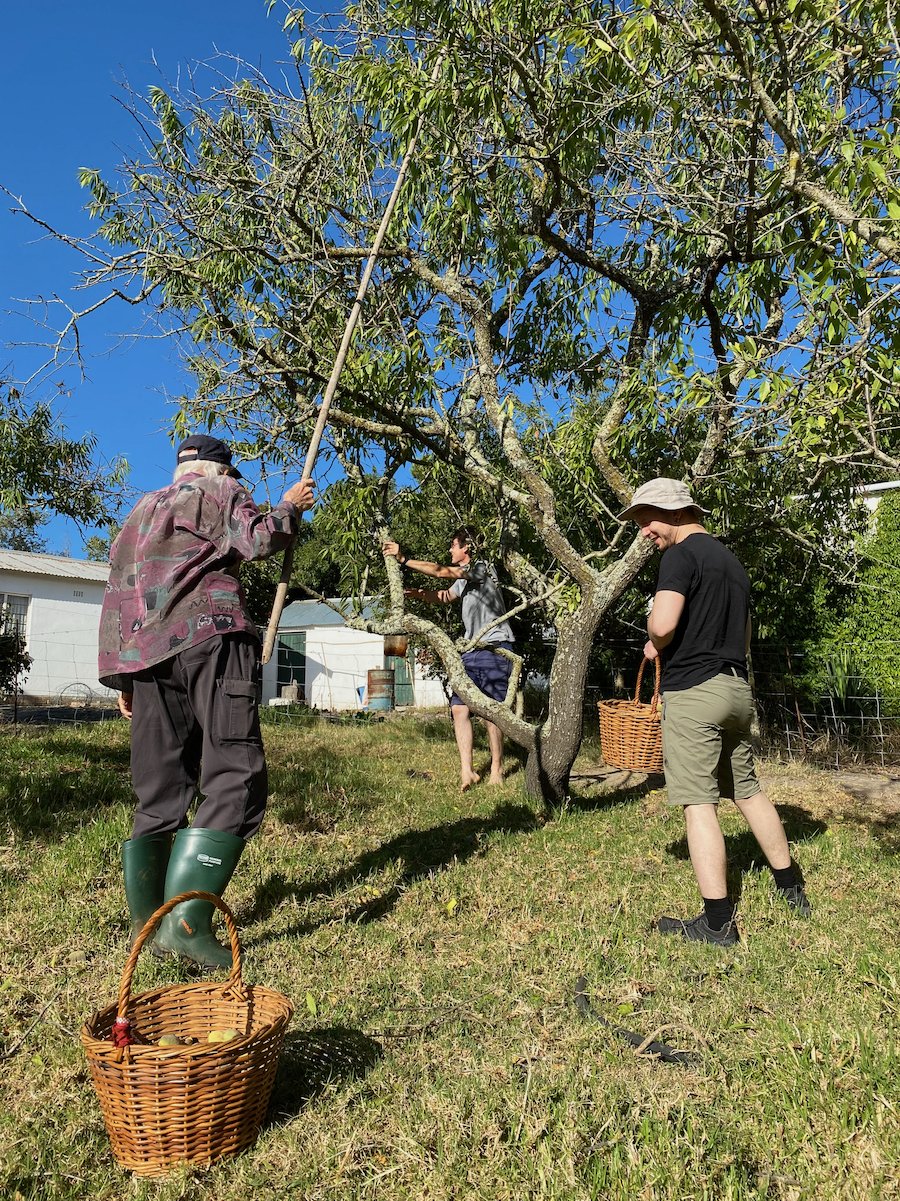

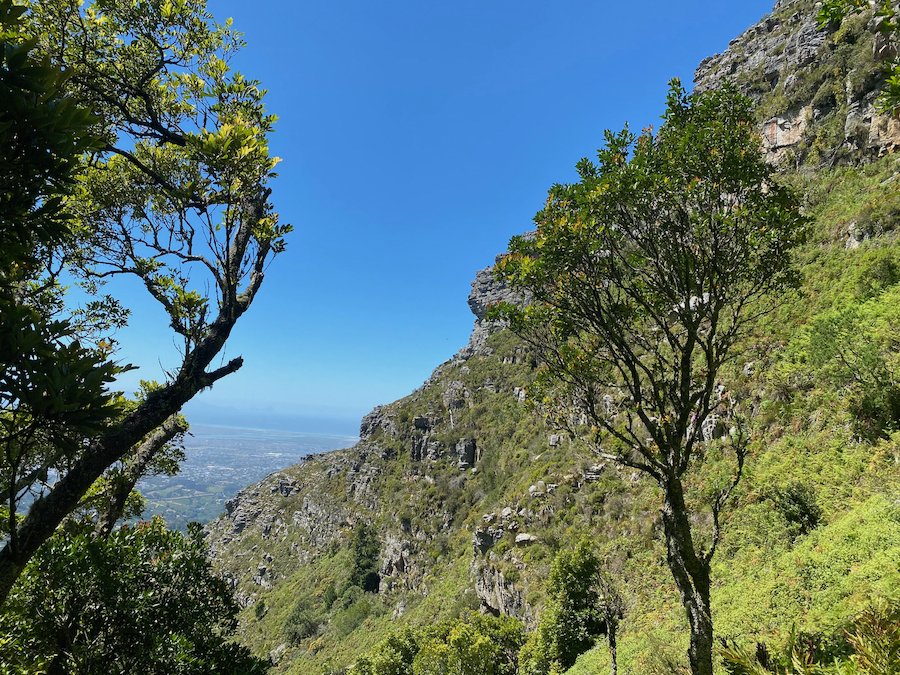
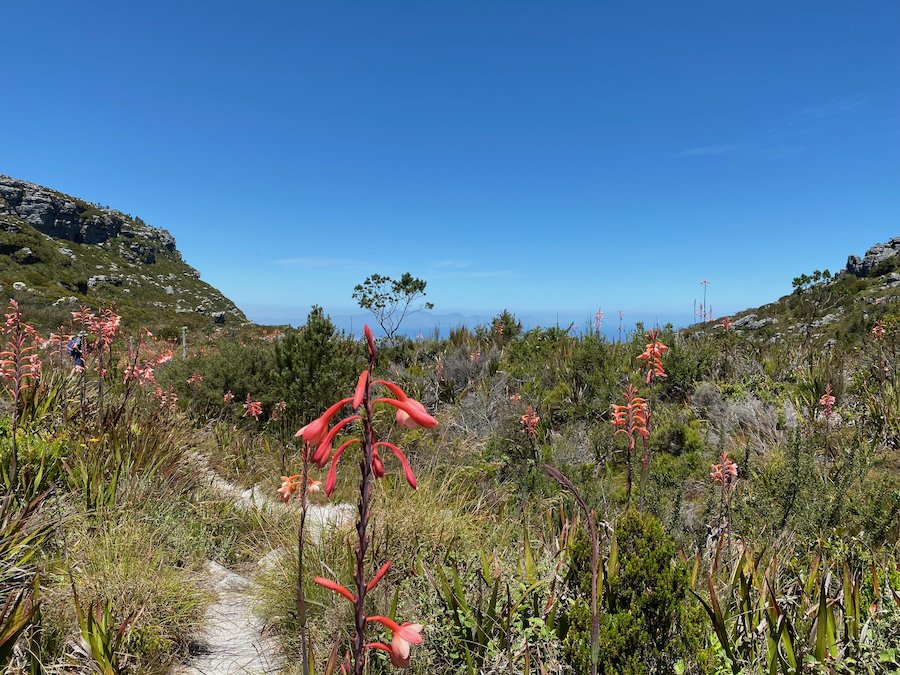
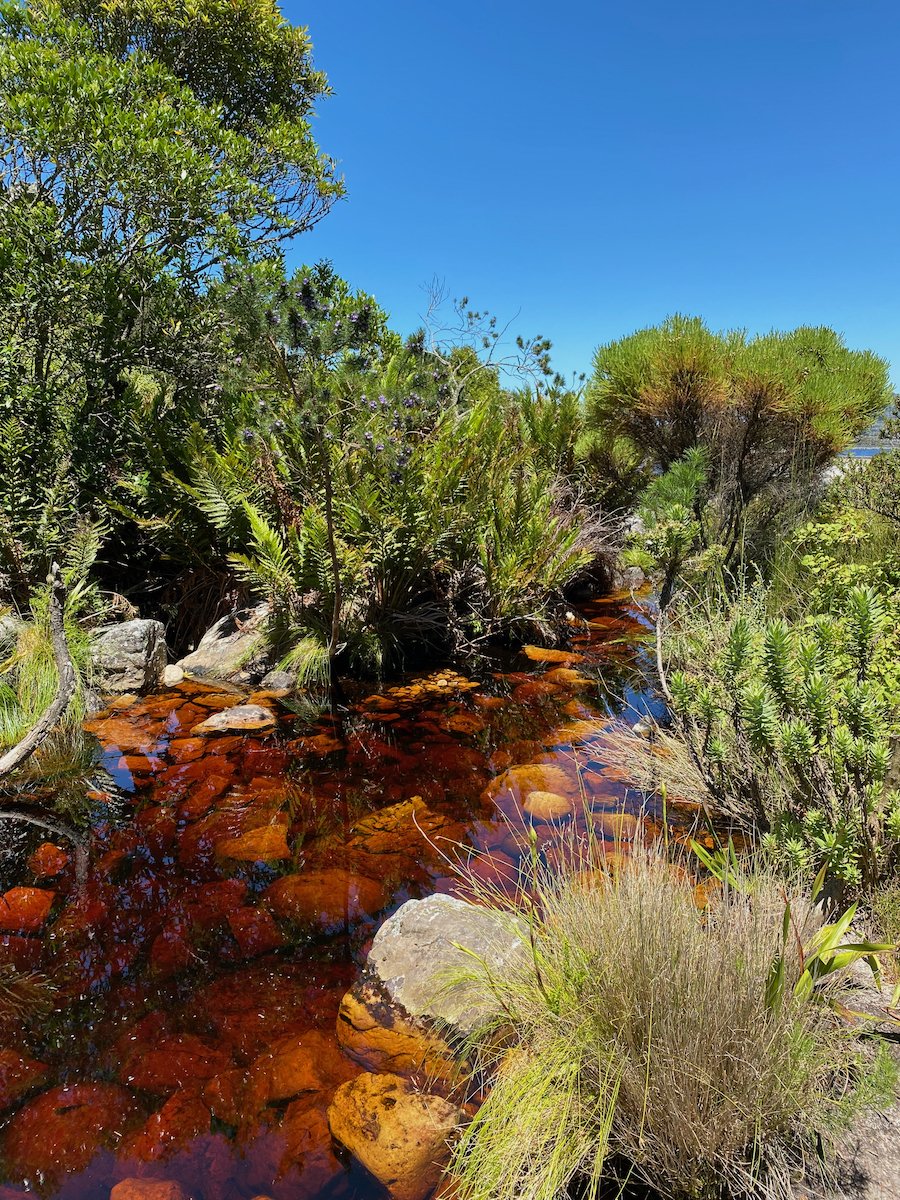

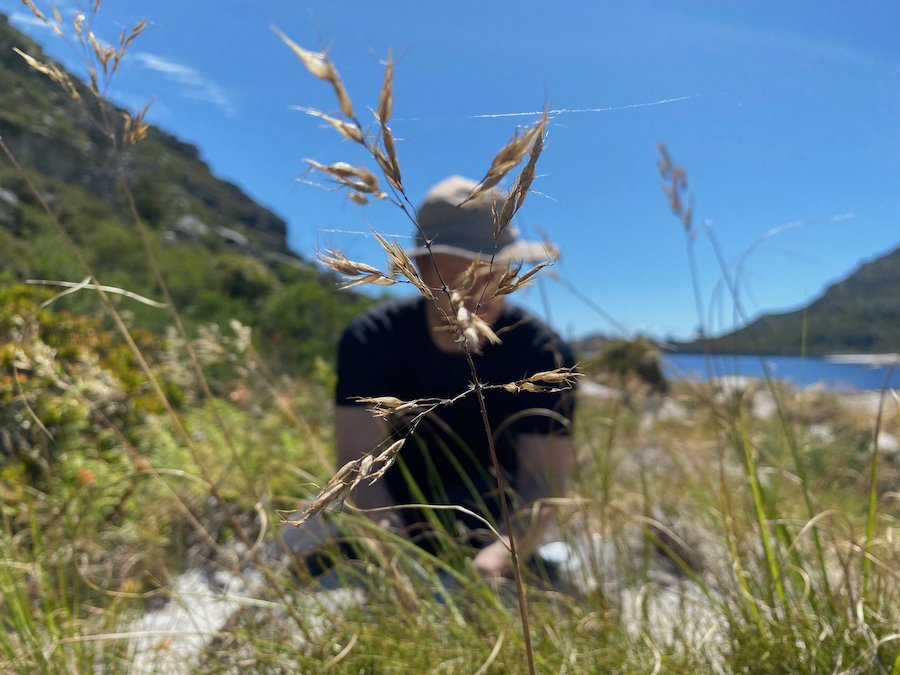






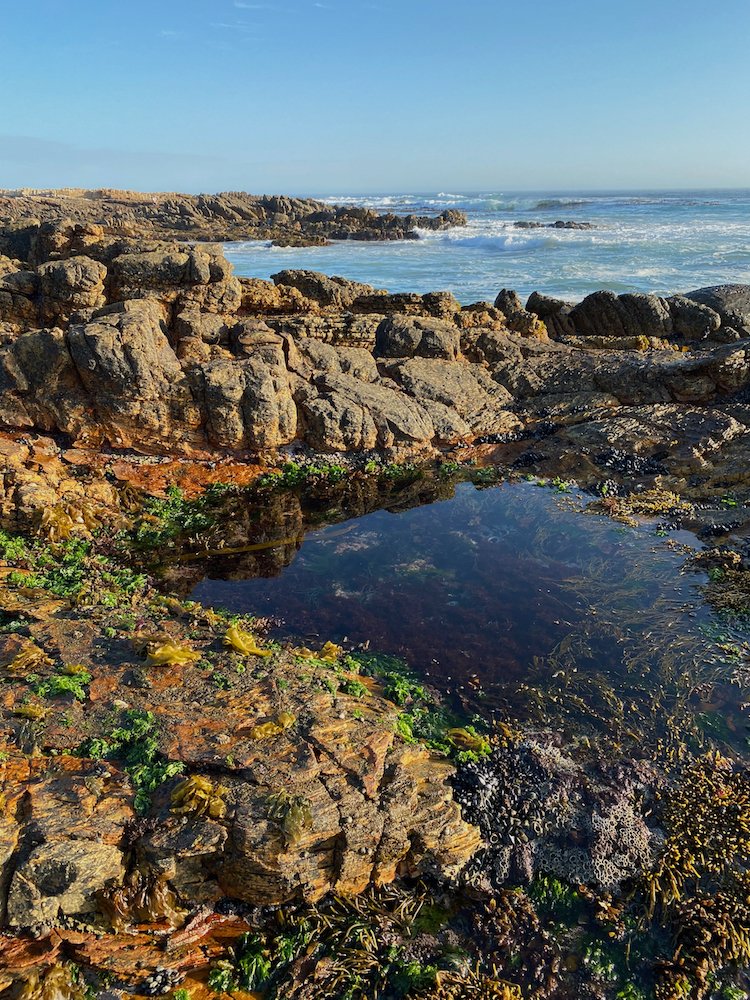

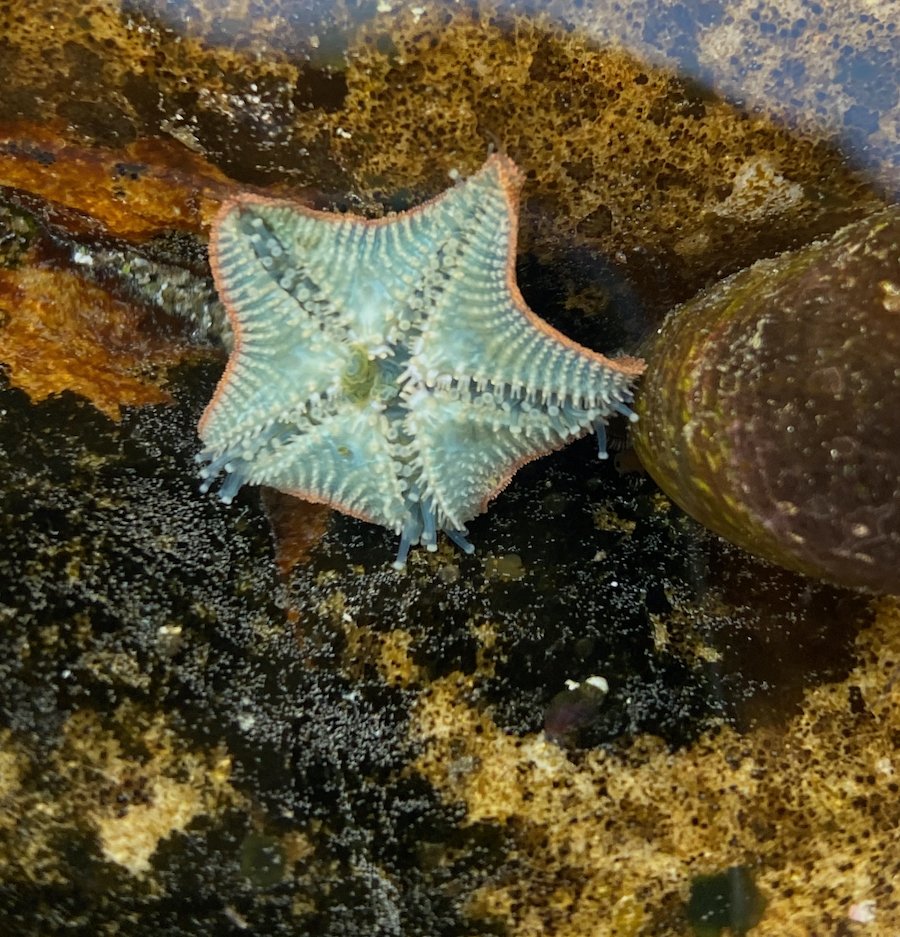

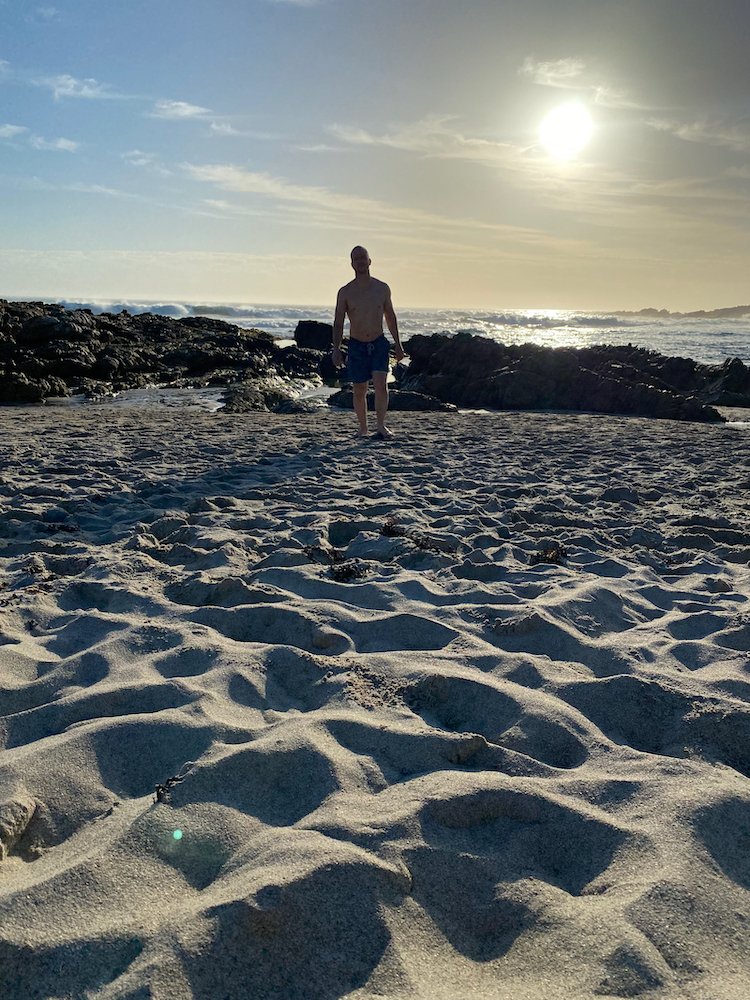

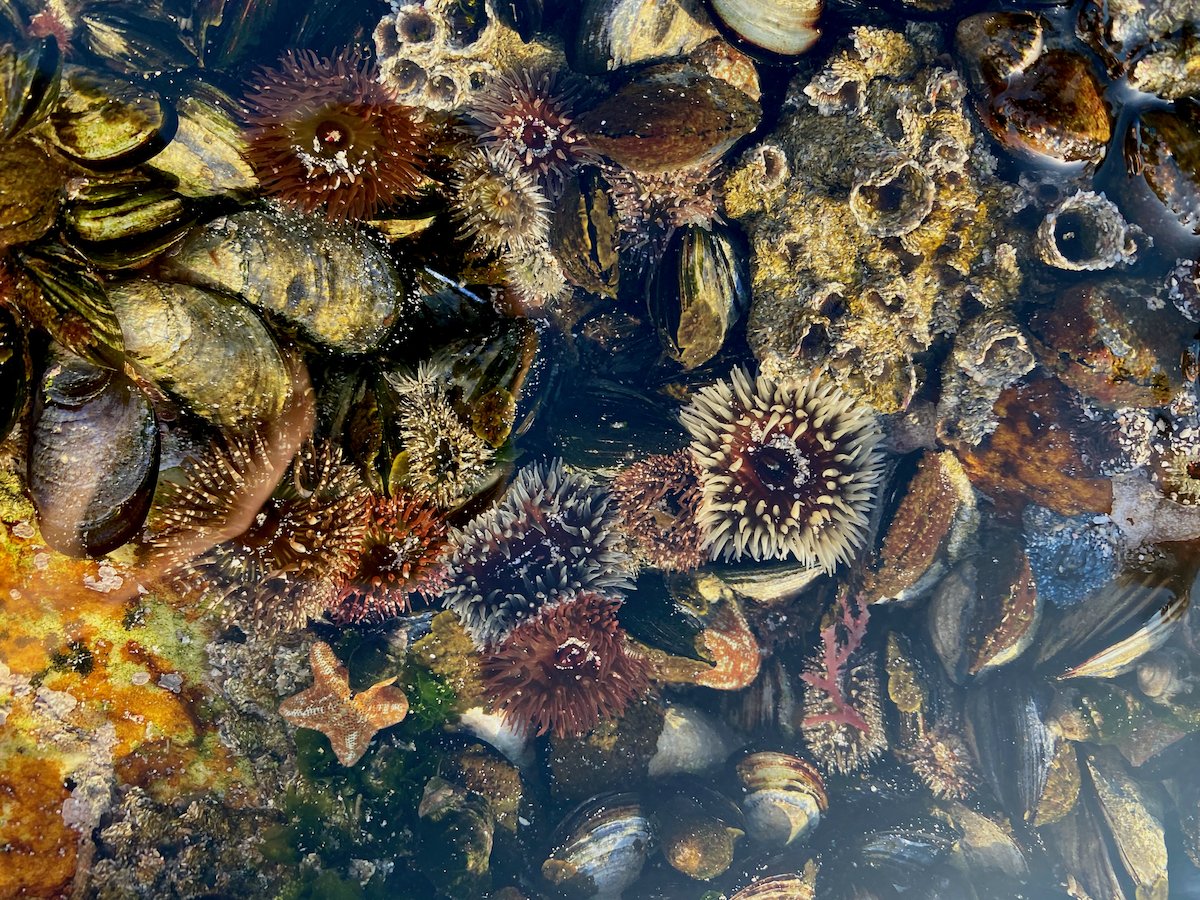











































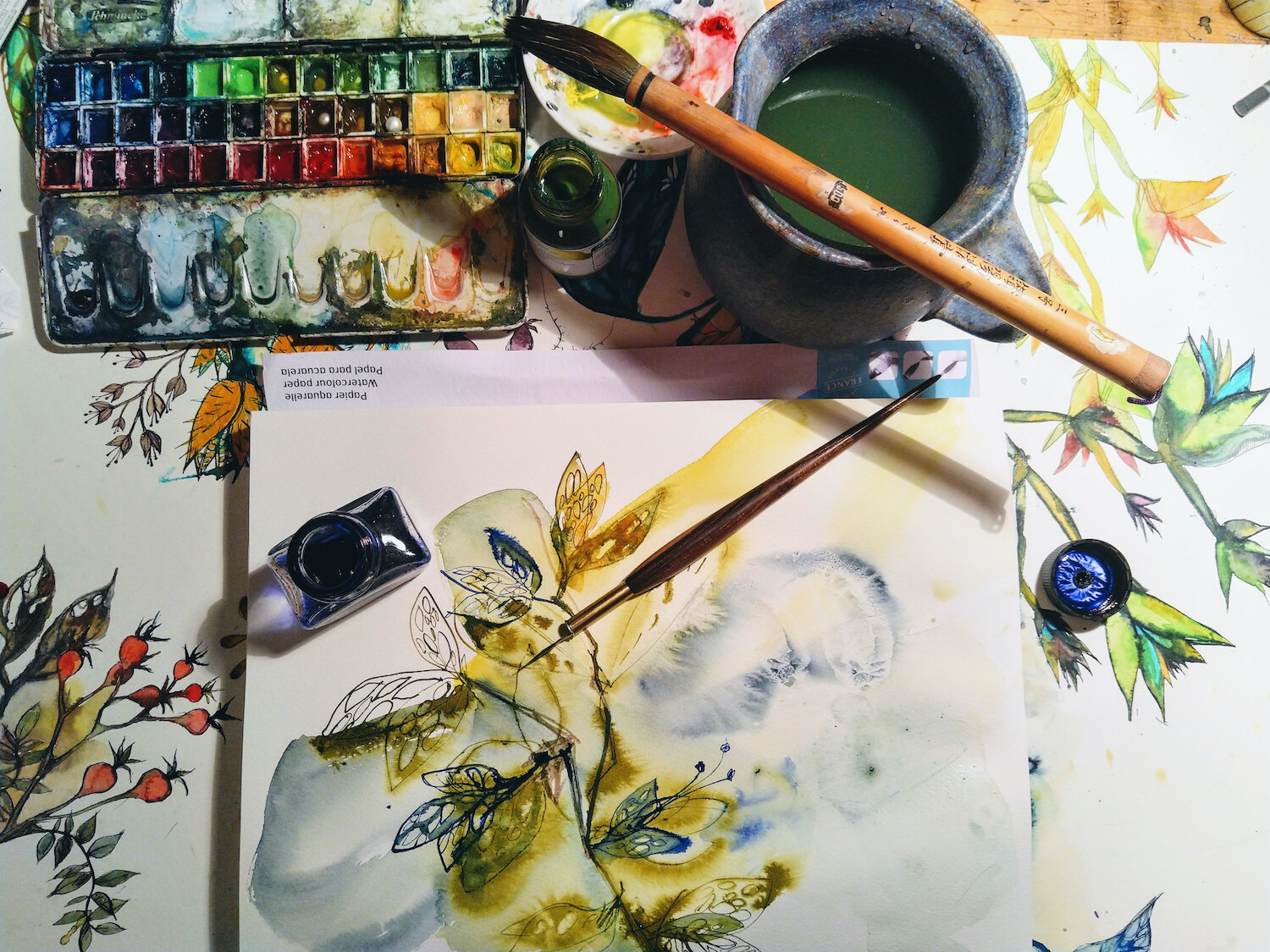

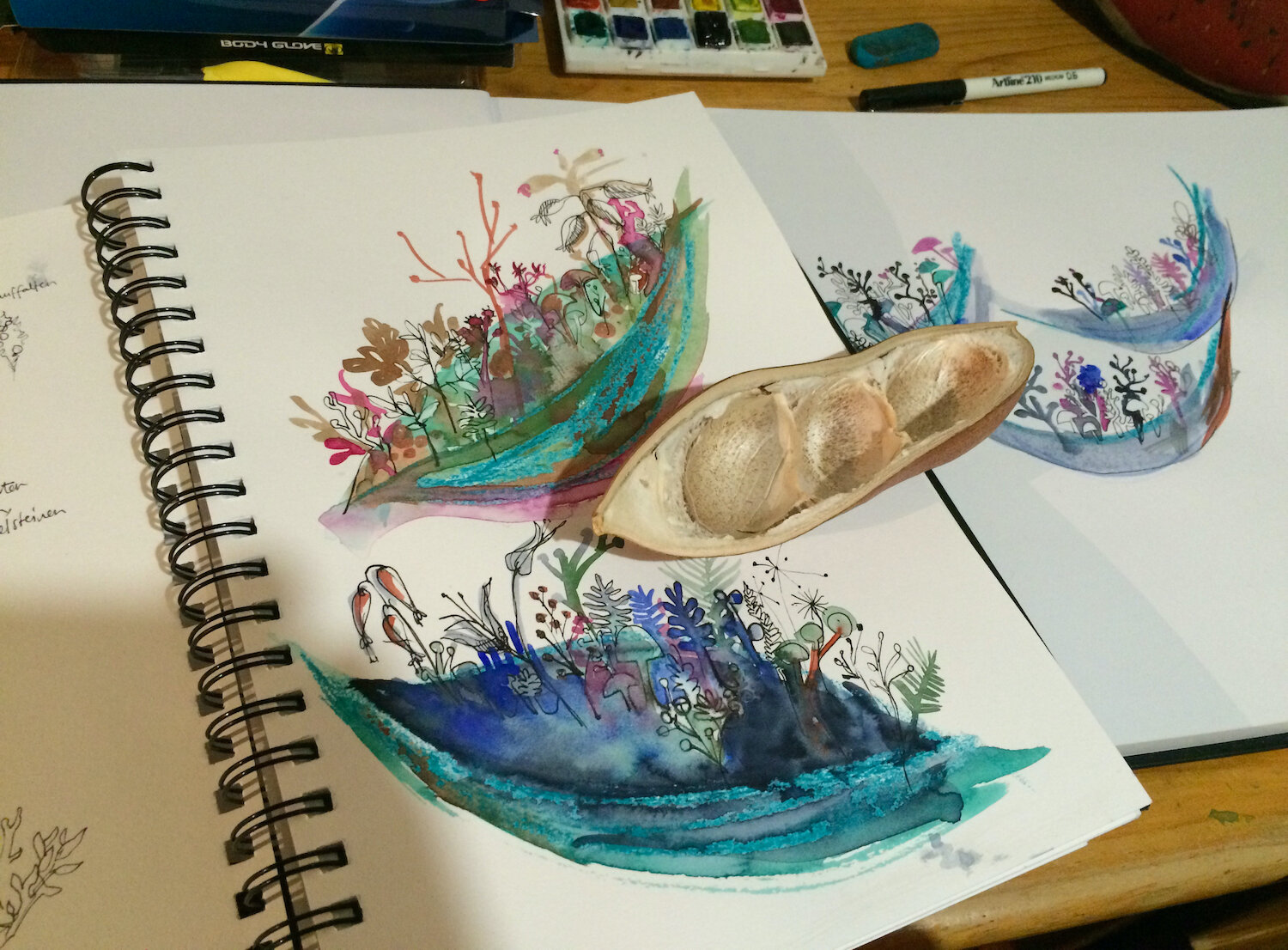




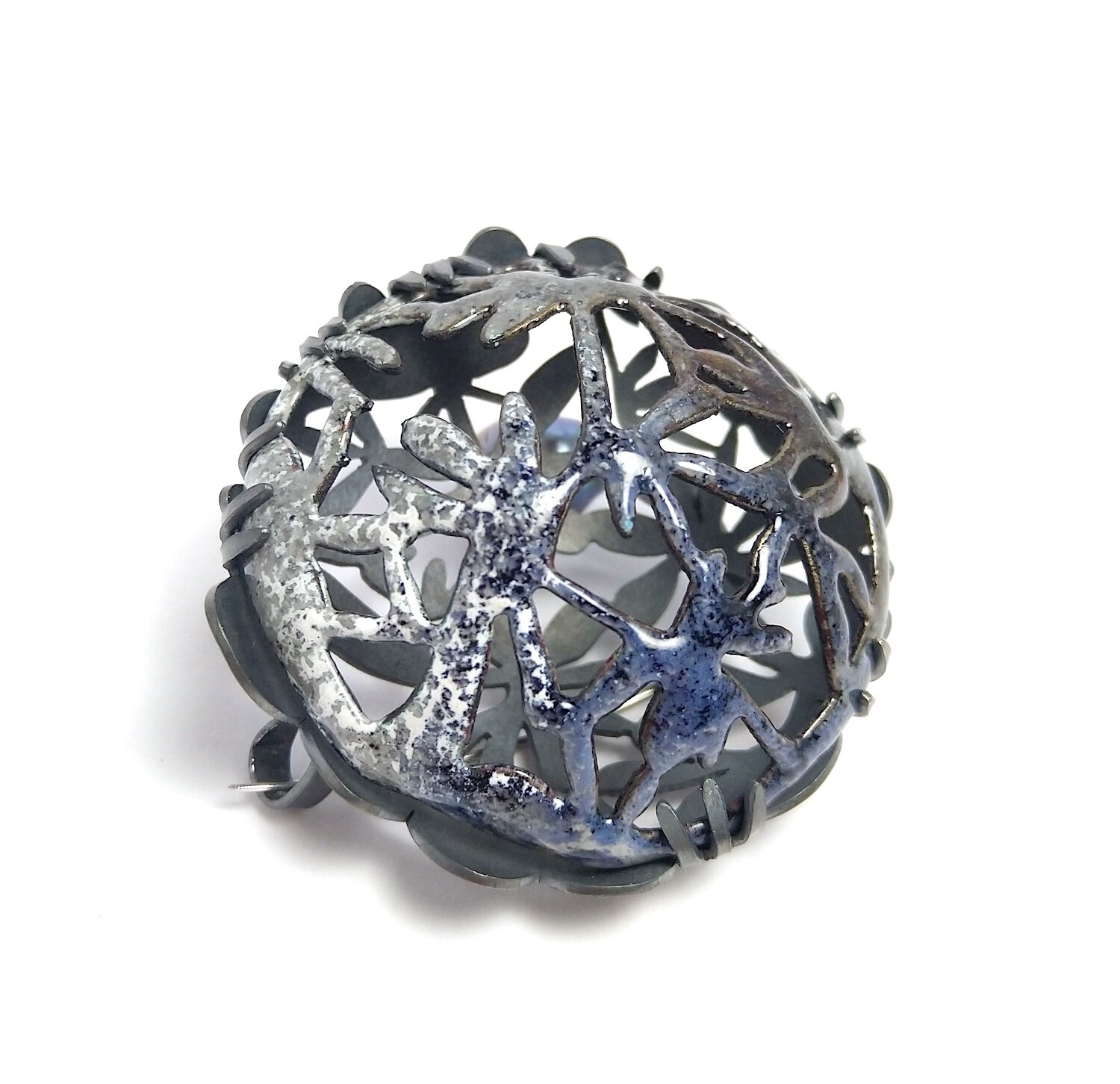




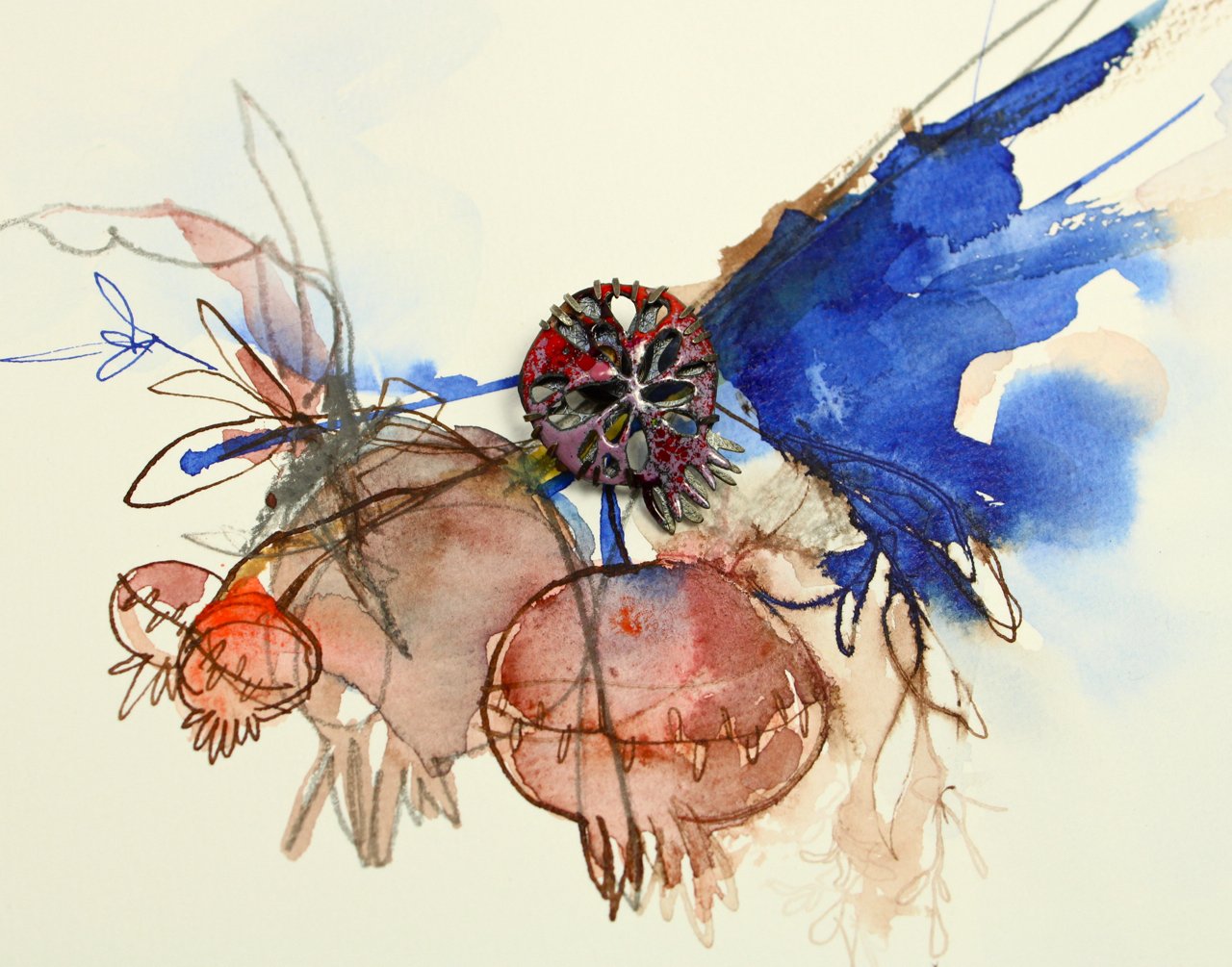









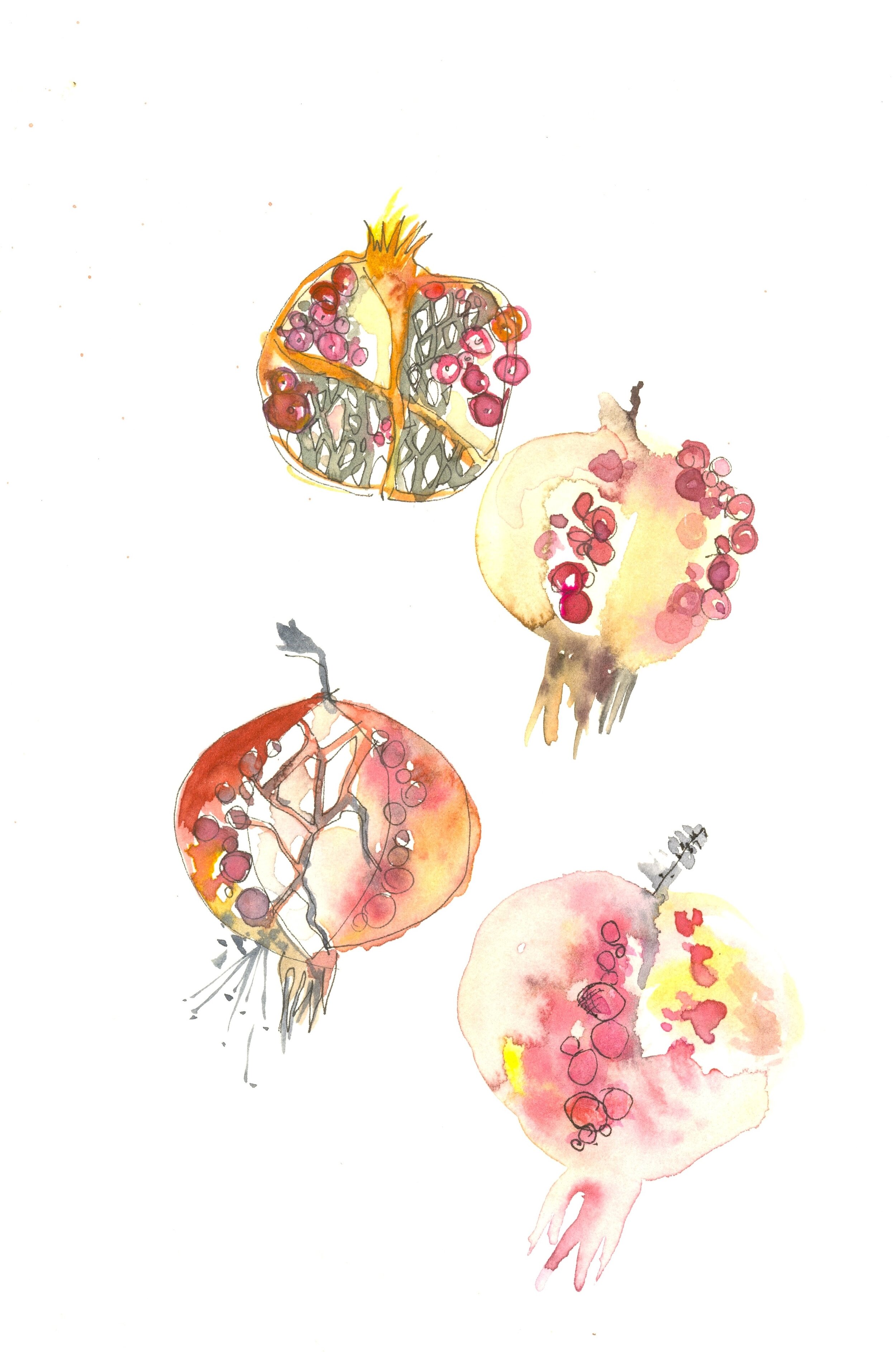
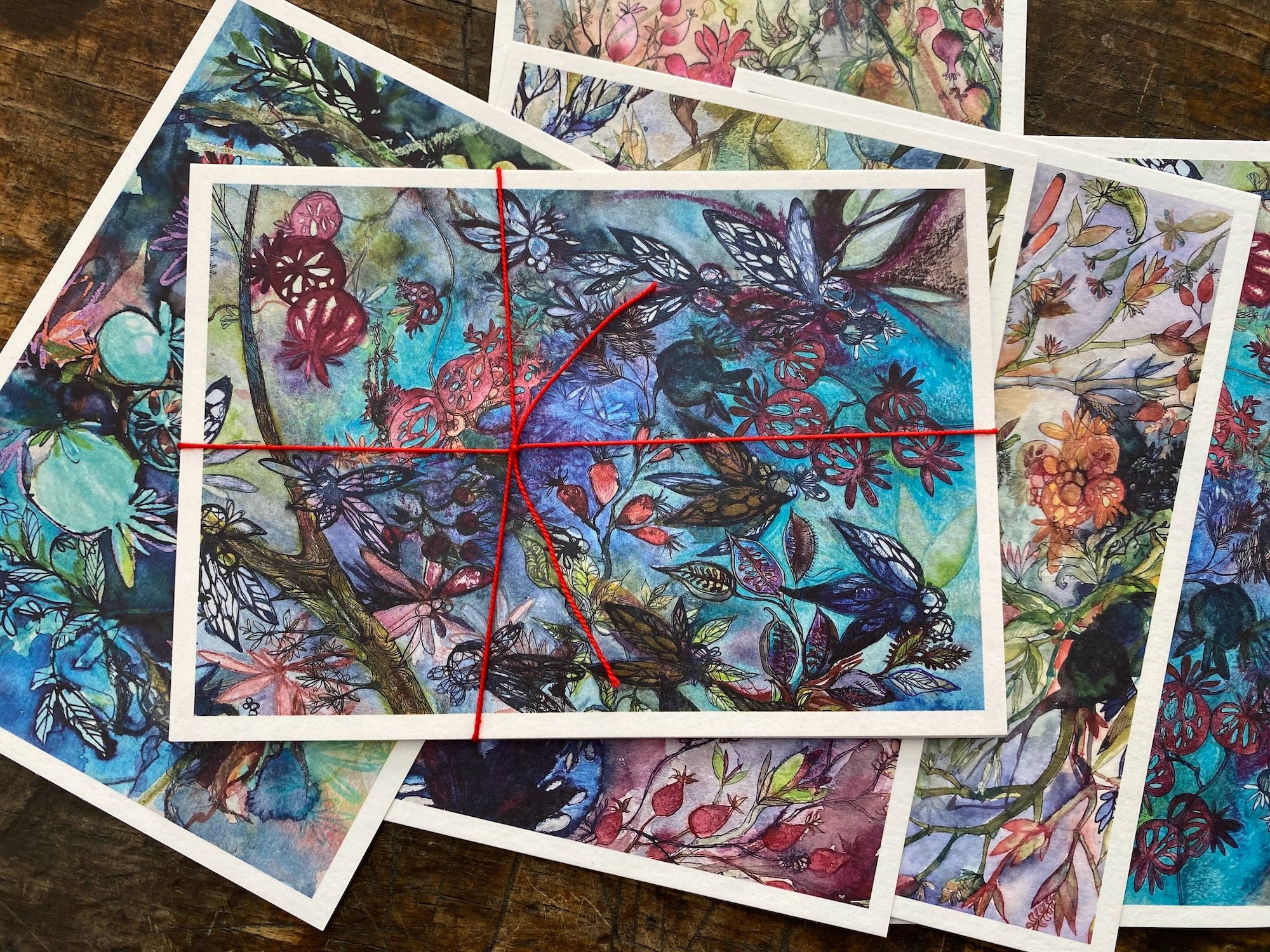








It’s winter. I cherish this white and noiseless time between the bustle of our Christmas season and the start of the new year. Since moving to Europe, it’s taken me a few years to learn to fully appreciate winter. Now, I know it’s one of the reasons I wanted to move here in the first place: I needed a real winter, I needed its pause and reflection, its going-underground, its gathering-of-forces, its quiet stripping away of the unnecessairy, its gestation for new creativity to emerge.